NORTH SAILS BLOG
All
Events
Guides
News
People
Podcast
Sustainability
Tech & Innovation
Travel & Adventure
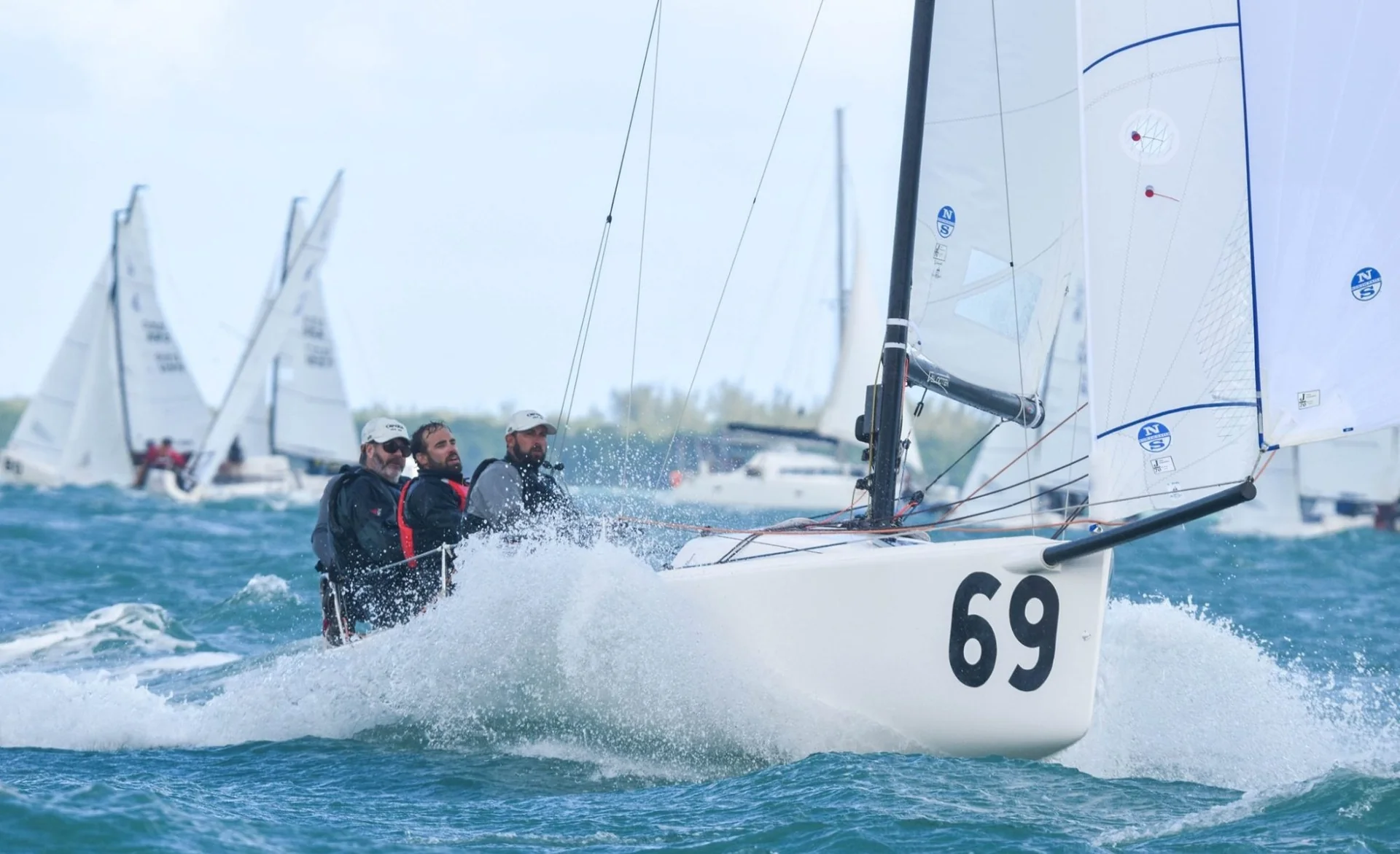
ZEKE HOROWITZ'S J70 TIPS TO THE PODIUM
ZEKE’S J70 TIPS TO THE PODIUM
Lessons Learned at the Helly Hansen Sailing World Regatta – Marblehead
📸 Chris Howell
As usual, the town of Marblehead pulled out all the stops for competitors to descend upon the quaint New England town for a weekend of racing in multiple one design classes. The J70 class showed up in full force with most of the top American teams including several class World Champions. At stake were two 2 qualification spots for the 2023 Worlds in St. Petersburg (1 open, 1 Corinthian) so the racing was as tight and competitive as ever. As crew for John Heaton on Empeiria, along with teammates Zach Mason and Will Felder, we were fortunate enough to come away with the Championship and a berth in next year’s Worlds. In addition, our North Sails teammates on Smokeshow, skippered by North Sails North American One Design Manager Allan Terhune with Paul Sevigni, North Sails Expert Chris Larson and Dave Hughes finished second, rounding out a weekend to celebrate for North Sails.
Our team was successful at the Helly Hansen Sailing World Regatta Series Marblehead by relying on lessons we’ve learned over the past couple of years. Admittedly part of our success is due to having sailed together for over 2 years and there is really no substitute for being comfortable with and confident in one another – trust that comes with time. However, aside from our team experience, there were past lessons we drew from during this event that helped us stay fast in the wide range of conditions presented. The J70, due to its rig and hull dimensions, is a boat that has a very fine line between being underpowered and overpowered. The conditions in Marblehead exaggerated this characteristic as the wind range was constantly hovering on either side of this fine line. So it was imperative to adjust your sail and body trim to accommodate for either the lack of power or abundance of power since it was rare to have the rig tuned perfectly. Following are some of our tips that should help keep you fast through the transitions in your next race.
Outhaul
The outhaul is one of the controls that’s easiest to ‘set and forget!’ But it’s actually an incredibly important adjustment for your power package. Due to the high aspect ratio (tall and skinny) of the J70 mainsail, the outhaul affects a larger area than it does on a sail with a lower aspect ratio. So a quick ease of the outhaul will put a boost of power into your sail plan to give you something to hike against. Our team has learned to be very diligent with this adjustment when we are transitioning from hiking to bodies in. Zach is our jib trimmer and we try to leave him in the boat the longest so he has a view of the jib as long as possible. If he is in the boat, we leave the outhaul quite loose to power up the main and try to get him hiking. We’re desperate to get him hiking as more righting moment = more speed! At this setting there is probably 6-8 inches between the boom and the foot of the main. As soon as he’s able to get on the rail and start hiking, we pull the outhaul back on to flatten the main and reduce drag. Any time Zach moves in or out of the boat, we make the appropriate outhaul adjustment.
Jib Foot/ Inhaul
How much to inhaul the jib can feel like quite the moving target… and it is. Its important to set the weather sheet in the cleat in a place where the jib trimmer can play it by “banjoing” it on when we need more power and then easing it back when we want to flatten the bottom of the jib and open the leech. When set correctly, this can be done without adjusting the weather sheet in the cleat. Think about your jib lead and inhaul setting similar to how we set the outhaul as described above. In light air or chop, you want more power in the bottom of the jib which means you want more depth in the foot compared to when it’s windy or flat water. A good rule of thumb is to try to get the foot of the jib to contact the cabin house as much as possible to prevent air from jumping through the gap under the foot. If it’s windy, you’ll need to pull the lead back a bit to depower the sail in order to inhaul enough to bring the foot to the cabin house. If it’s light air, you’ll need to push the lead forward a bit in order to provide enough depth in the foot (power) when the foot is along the cabin house. A good range on the jib lead is between 6 – 7.5 holes showing between the front of the car and the forward most factory bolt in the jib track.
Cunningham
The cunningham tends to be neglected just like the outhaul. Most of the time it’s not the most critical adjustment to make but there is a time when it becomes your very best friend. We saw this condition on the second day of racing in Marblehead when the breeze ranged from about 8 knots in the lulls to upwards of 16-18 knots in the puffs. We all know it’s best to set your rig tension for the lulls and do your best to survive the puffs and that’s where the cunningham comes in. For most, if you’re caught with your rig too loose, your first move is to whale on the backstay to depower and keep the headstay tight. But the problem is that without adequate rig tension, the tight backstay will quickly invert or wash out the main sail leaving you with huge overbend wrinkles and that ‘inside out’ look. But your headstay is still unstable making the boat hard to sail. This is when you want to really whale on the cunningham. To be clear, I don’t mean to just take those luff wrinkles out, I mean WHALE on it! Loads of cunningham tension pulls the draft of the main forward, putting some shape back into the sail (un-inverting it). This then allows you to pull even more backstay on to control the headstay. Your leeward shrouds will be doing basketball sized loops – blowing in the wind, but your headstay will be controlled and you’ll still have shape in your mainsail – albeit a flat shape. Will sits all the way forward going upwind and he keeps the cunningham in his hand. If we hit a light spot, he eases the cunningham as I ease the backstay to power up the rig and then as the next puff hits, he trims it on as I trim on the backstay. Keep your eye on the inversion wrinkle that comes out of the clew and goes up to the inboard end of the bottom batten. When overpowered, you want to see this wrinkle only and use the cunningham to eliminate the wrinkles below/forward of it. More cunningham = ability to pull more backstay = more controlled headstay = FAST!
Weight Placement
The J70 likes to have the crew weight forward going upwind. In fact, in light air it’s difficult to get forward enough. Some teams have experimented with sending their forward-most crew just in front of the shrouds and it seems to be pretty quick when the breeze is very soft. It’s also important to know that fore/aft weight placement can help the boat with moding. All other things equal, pushing weight forward tells the boat to point while moving weight aft helps with a bow down mode. In light air, it’s also important to think about body drag through the air. Try to hide the bodies from the wind as much as possible by tucking up to the cabin house or to your teammate in front of you. Also think about how you can position your body to be as aerodynamic and small as possible. Instead of facing forward with your shoulders square to the breeze, scoot forward and rotate your shoulders so they’re more in line with the wind direction. Sounds insignificant but reducing drag is the name of the game,
It seems like no matter how much we learn in the J70, we’ve never learned enough. It’s important to always be thinking critically and creatively about how to get faster. Keep the learning curve steep and watch your results improve! For more in depth information or for any specific questions, don’t hesitate to reach out to your J70 class North experts.
Contact your North Sails J70 North American Experts here:
ZEKE HOROWITZ ALLAN TERHUNE ALEX CURTISS
READ MORE
READ MORE
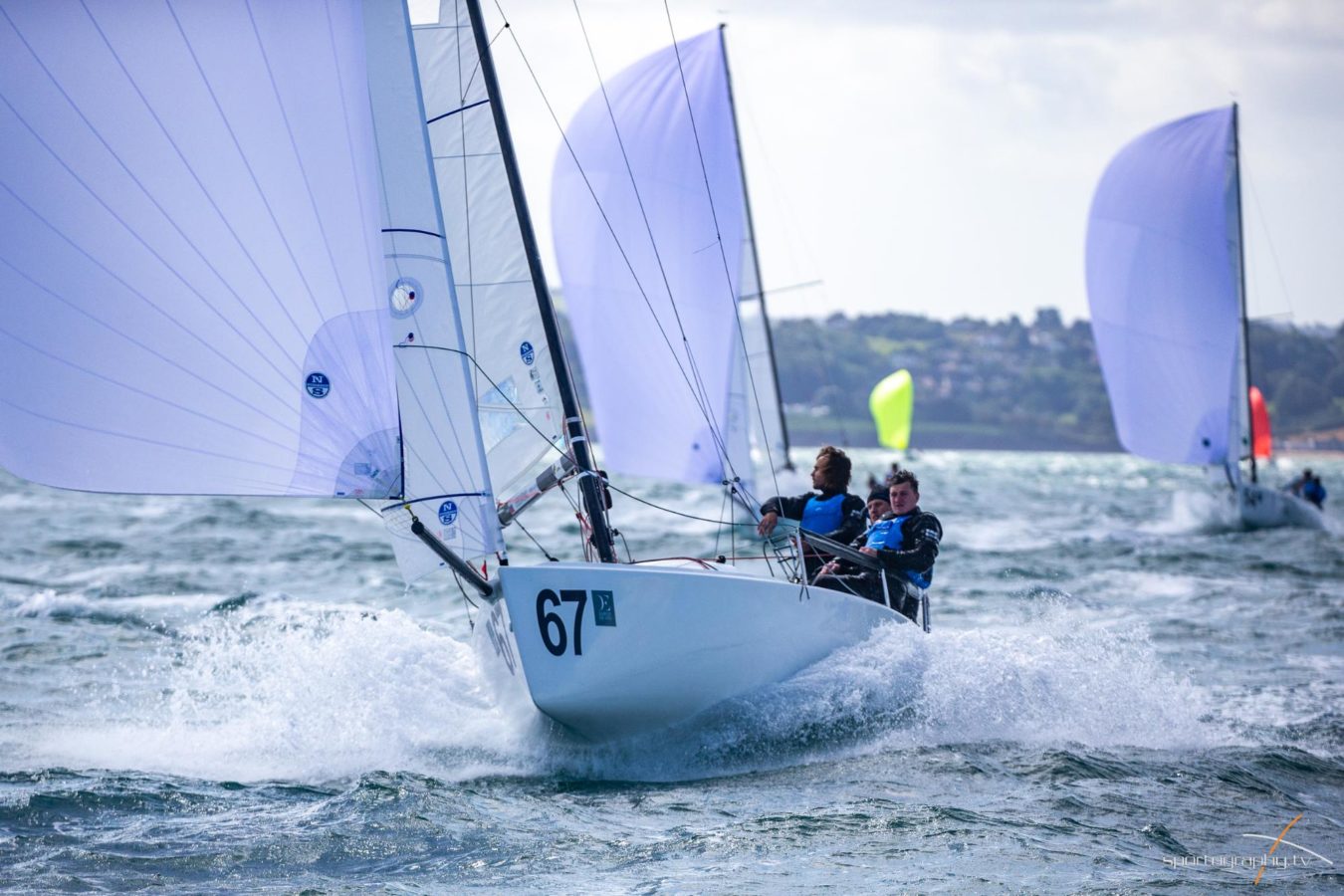
J/70 NORTH AMERICAN CHAMPIONSHIP TOOL KIT
Bring Your Best Game to the J/70 North American Championship
We are excited to get back out racing again, and we wanted to reshare some of our favorite articles and webinars before you head to Annapolis for the J/70 North American Championship. This Tool Kit covers all the bases, including tips on boat speed in light air, how to make the most of our on-the-water coaching, and our updated J/70 Tuning Guide.
On-the-Water Coaching for Everyone
North Sails J/70 Class Expert Eric Doyle will be available on the North coach boat from Tuesday-Thursday offering tips on fine-tuning your sails. Contact Eric in advance to let him know you would like your sails checked.
Contact Eric
Rewind and Rewatch
While we were unable to go sailing, the North Sails team switched their motto to “Let’s Get Faster” and produced a number of J/70-specific webinars that are filled with invaluable information from the top sailors in the class. Don’t leave the docks before watching them all!
Downwind Techniques Downwind Boat Handling
Mainsail Trim Lessons Learned in Miami
Have You Read our New Tuning Guide?
With the introduction of the new XCS-4 Mainsail and J-2+ Jib to our J/70 sail designs, our Class Experts have revised the North Sails Tuning Guide. Countless hours of sailing, testing, and competing in the J/70 fleet have gone into this revised editions which is a must-read before the North Americans.
Learn More
Bitesize Tips for Light Air
Read our easy-to-follow tips on rig tuning, sail trim, and boat trim to help you sail your J/70 faster when the breeze is light.
Learn More
Optimize Your Downwind Performance
Displacement mode, wing-on-wing, or full plane? Understanding the J/70’s different downwind modes will help you make the right move at the right time when racing.
Learn More
Why is Headstay Sag Fast Upwind in Light Air?
What is headstay sag and how can you use it to your advantage to maintain better speed in light-air conditions? One Design expert Tim Healy describes the risks and rewards.
Learn More
North Sails Certified Service Has You Covered
The North Sails Annapolis Certified Service Team is ready for you with overnight sail service and repairs during the regatta. Call Ridgely Mackenzie to arrange a sail pick up on 443-995-7188.
Contact Ridgley
READ MORE
READ MORE
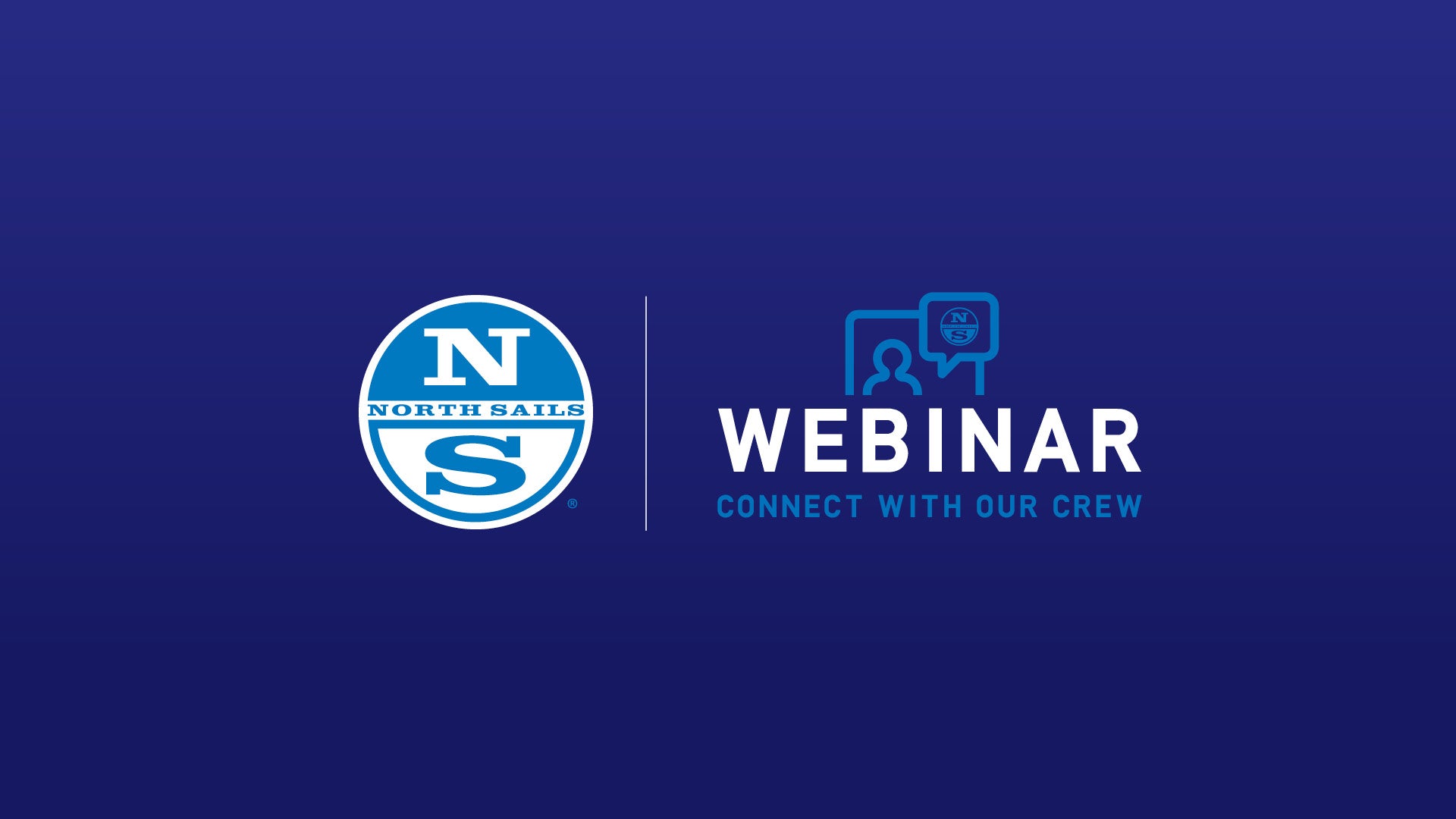
LET'S TALK J/70 | DOWNWIND BOAT HANDLING
LET’S TALK J/70
Downwind Boat Handling
With visual support from images and video, North experts Allan Terhune, Eric Doyle and Alex Curtiss analyze downwind techniques in different wind strengths, including displacement modes and planing in heavier air. Pick up new techniques to improve your J/70 racing experience!
Topics covered include:
1:26 – Setting the J/70 spinnaker
12:50 Soak VMG Jibing
21:00 Jibe Kite to a Wing
32:31 Jibing boom to wing on wing
41:40 Lazy Planing Jibe
47:25 Planing Jibe
56:23 Blow Through Jibe
1:01:28 Take Down
Learn more about North Sails fast J/70 designs.
READ MORE
READ MORE
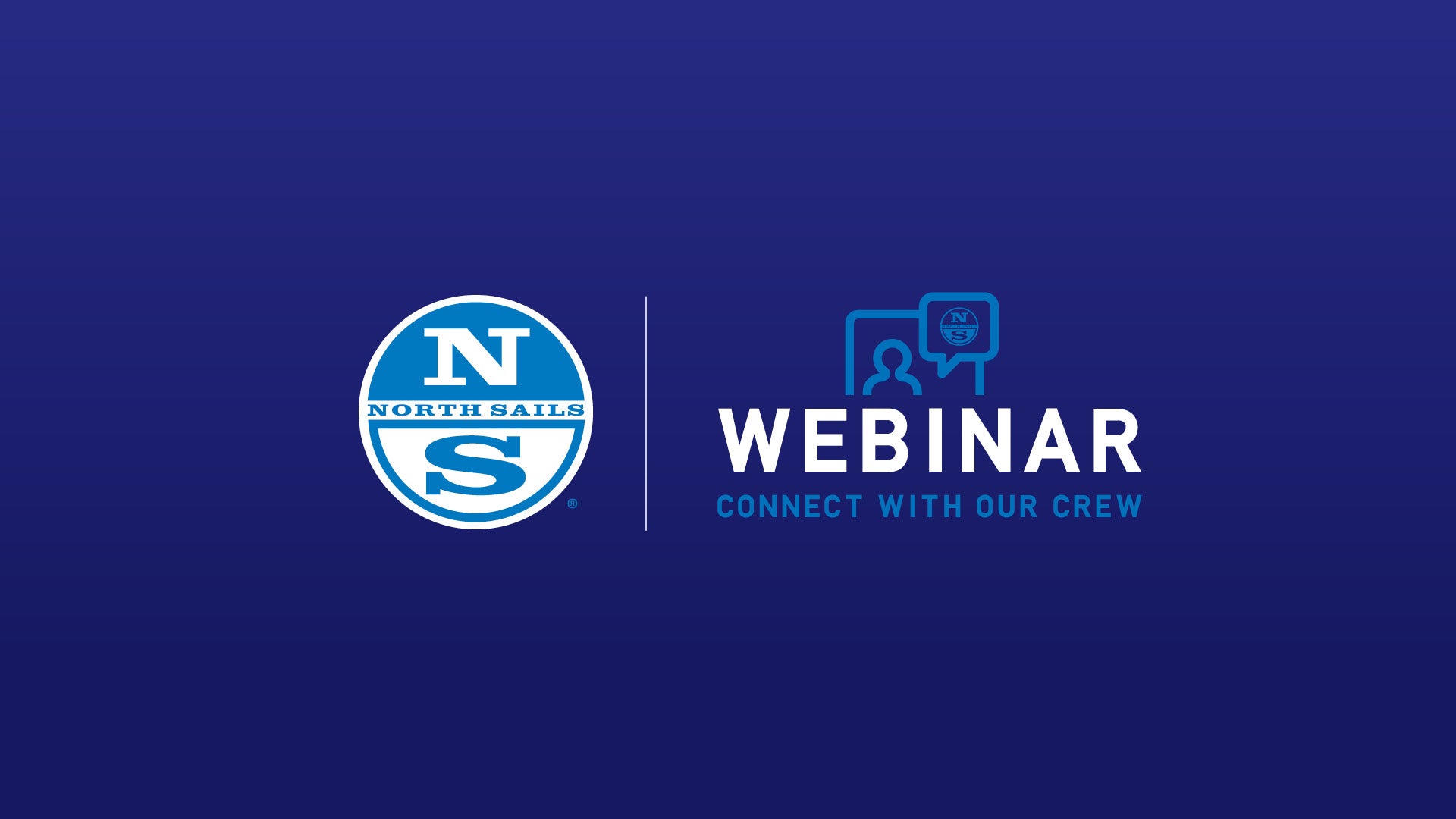
LET'S TALK J/70 | WHAT TO EXPECT AT THE 2021 WORLDS
LET’S TALK J/70
What to Expect at the 2021 Worlds in Marina Del Rey
North Sails Experts and Southern California locals Eric Doyle and Alex Curtiss talk about the conditions and what to expect in Marina Del Rey, home of the 2021 J/70 World Championship.
Topics covered include:
9:35 – Typical Southern California seabreeze
12:51 – What’s the California Eddy?
16:35 – Current
21:48 – Keys for Success – Setup & Tactics
29:45 – Recommended sail line up
43:22 – Lead up regattas
Learn more about North Sails fast J/70 designs.
READ MORE
READ MORE
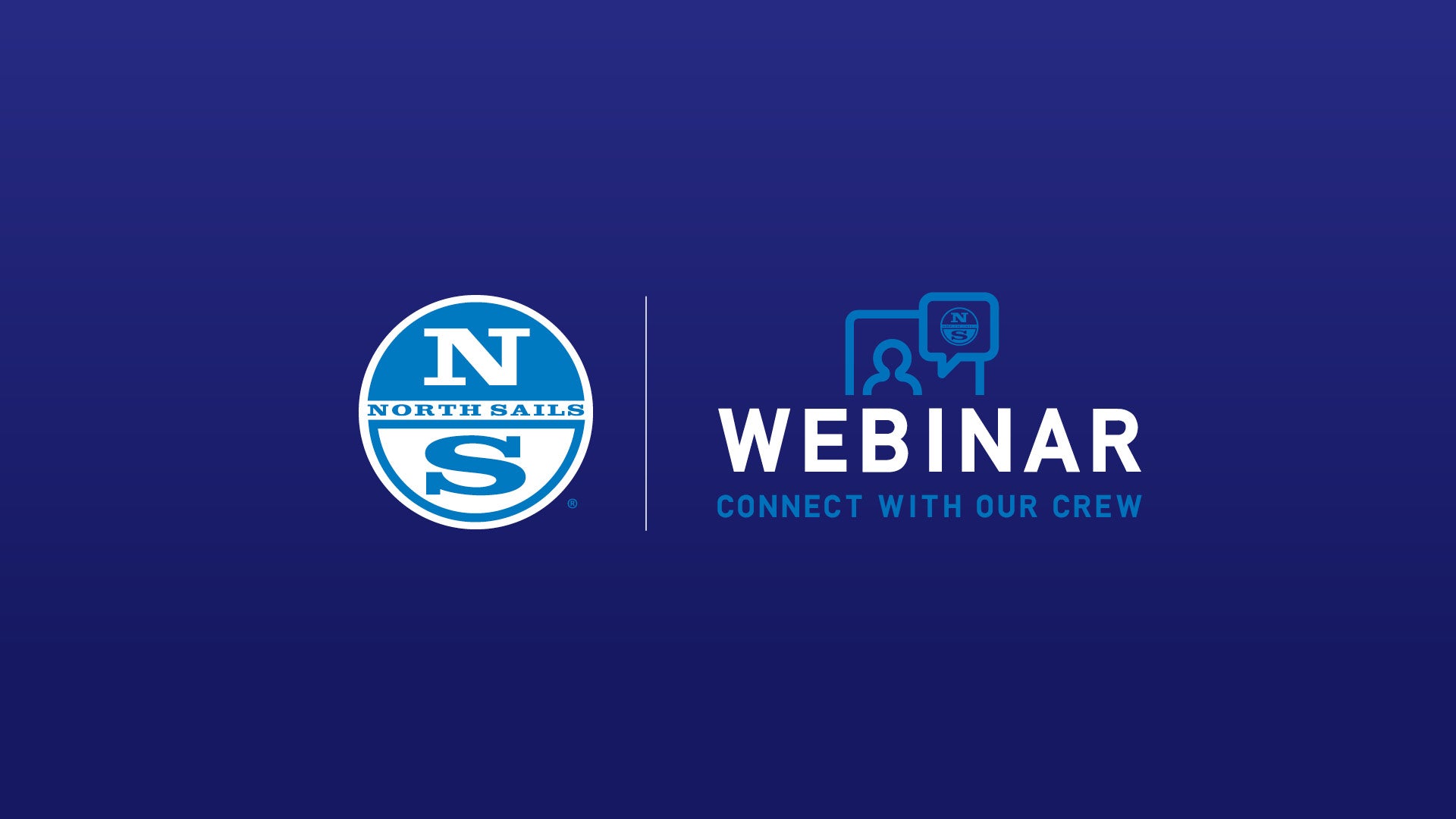
LET'S TALK J/70 | LESSONS LEARNED IN MIAMI
LET’S TALK J/70
Lessons Learned in Miami
Keeping the J/70 conversation going with class champions Tim Healy, Ruairidh Scott, and Allan Terhune. This interactive session includes lessons learned at the 2020 Bacardi Invitational and J/70 Midwinters.
READ MORE
READ MORE
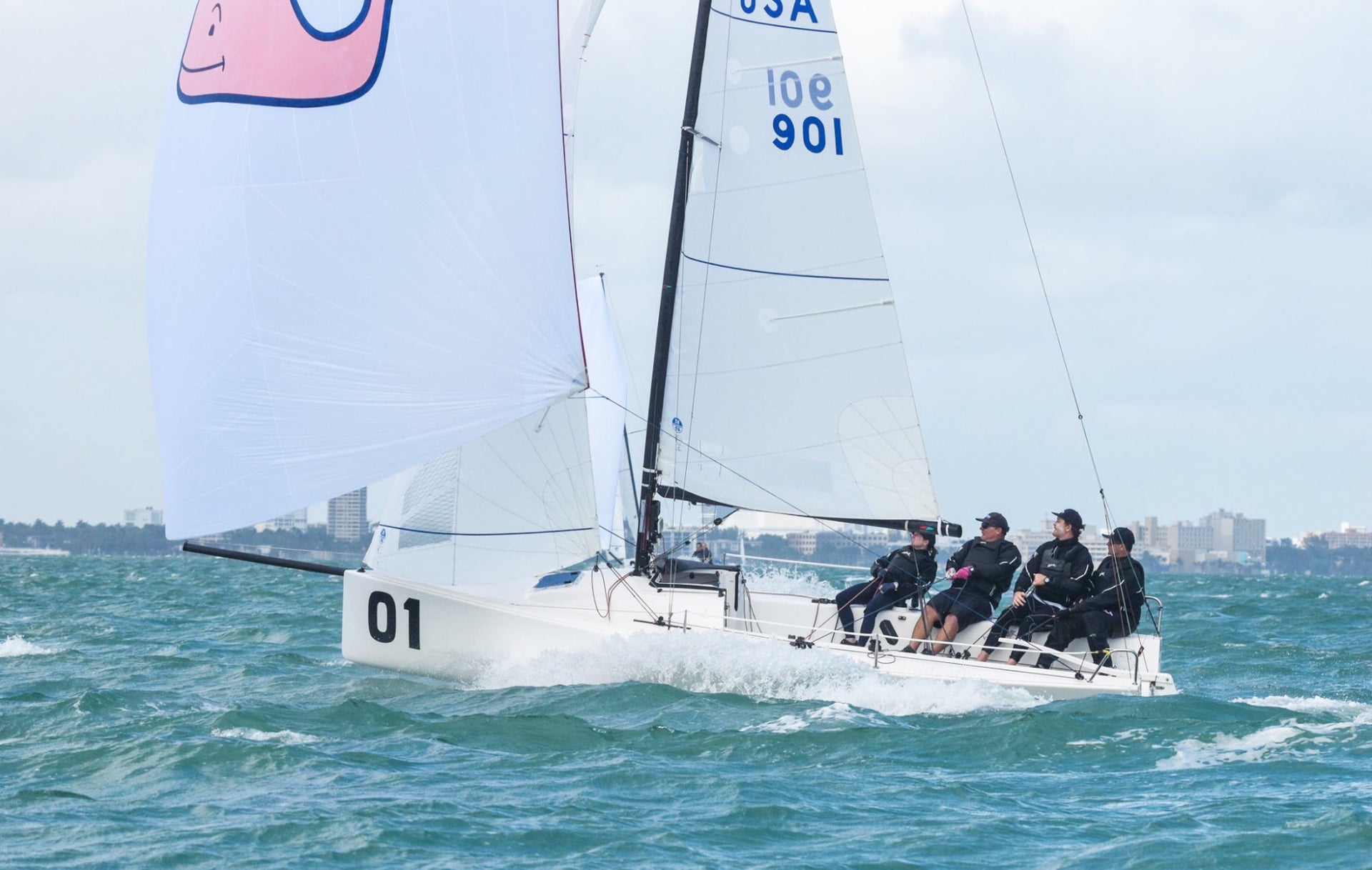
BAXTERS PREVAIL AT THE J/70 MIDWINTERS
BAXTERS PREVAIL AT THE J/70 MIDWINTERS
When the Game is Close, North Delivers.
2020 J70 Midwinter Champions 📸 Chris Howell
Team Vineyard Vines John and Molly Baxter, Ben Lamb, and North Expert Allan Terhune are the 2020 J/70 Midwinter Champs after a relentless eight-race battle in a variety of testing conditions. On the final day, they snagged two bullets using the 2019 J/70 Worlds winning inventory: F-1 Mainsail, J-6 High Clew Jib and AP-1 Asymmetrical kite.
We caught up with John Baxter for a quick interview.
Team Vineyard Vines had not sailed for a few months leading up to the Midwinters. What did you guys do to prepare and get back up to speed so quickly?
We have tried to be diligent about keeping good team notes and having repeatable settings, since we don’t get to practice a lot before regattas. We had two days of practice prior to the regatta with our training partners on 3 Ball JT and Savasana, along with our coach, Grant “Fuzz” Spanhake. Fuzz was a big factor in getting us back up to speed by looking at our sails and boathandling, and our training partners pushed us with great line-ups and open dialogue throughout the week. Also, it is huge that we get to sail with Ben Lamb and Allan Terhune. They are both great sailors and have been racing a lot in J/70s since our last event together in Cleveland last September, so they helped kick us back into shape as a team.
Not many teams sail as a husband-wife team and also bring the family with them. Why is this so important to you both?
Molly and I met in college on the St. Mary’s College Sailing Team and have loved racing together ever since. We both enjoyed cruising and sailing with our own families when we were kids, and love continuing that tradition with our own two boys. Charlie (6) and James (3) race with us for summer beer can club racing at Riverside Yacht Club, and they love coming to our J/70 regattas.
The J/70 seems like such a simple boat, but there is clearly a lot to it. What are a few things you focus on?
We agree it is a simple boat and we do our best to not over-analyze all the variables. We try to keep our focus on refining our boathandling and technique.
Why do you choose North Sails?
We have been sailing with North Sails for many years. We don’t think it’s an accident that the top of most of the Grand Prix classes are dominated by North Sails. They continually strive to refine and enhance the designs, and Tim Healy and Allan Terhune have worked closely with us to optimize the sails for our style.
See also: Heavy Air Tips – Allan Terhune Explains What Worked for Team Vineyard Vines at the 2020 J/70 Midwinters.
The North AP-1 Spinnaker, a J/70 must-have. 📸 Chris Howell
Team Empeiria, 5th Place. 📸 Chris Howell
The champs. 📸 Chris Howell
READ MORE
READ MORE
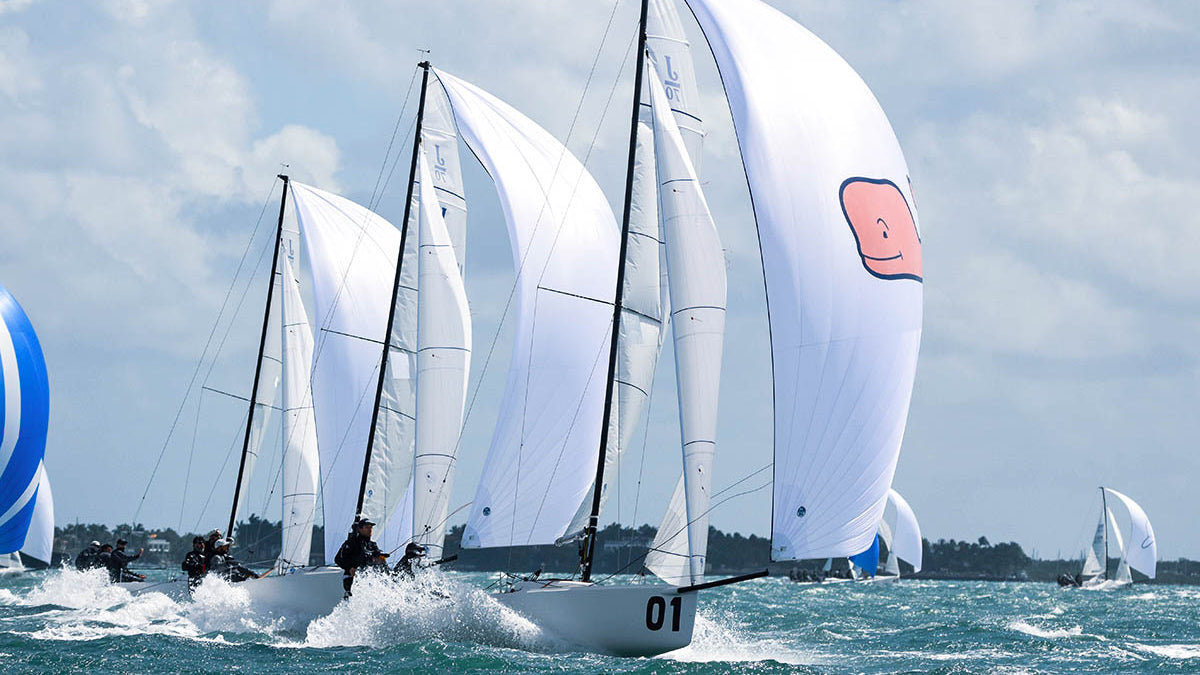
J/70 TIPS: HEAVY AIR
J/70 TIPS: HEAVY AIR
Allan Terhune Explains What Worked for Team Vineyard Vines at the 2020 J/70 Midwinters.
When the breeze increases, a different set of skills are required. We caught up with North Sails expert Allan Terhune, who called tactics on the winning team at the J/70 Midwinters in Miami, for some lessons learned from a windy weekend.
Sailing in Breeze – Upwind
The key to speed upwind is keeping the boat flat and balanced. This is achieved two ways: rig tune and trim.
Rig Tune
We were at the top of our tuning guide most of the weekend to keep our headstay tight. One key factor is the backstay gross tune; make it TIGHT. You need to have enough throw to pull backstay on, in order to flatten out the main. Many teams took the slack out of their gross tune but didn’t make it tight. Also I heard many people did not go to the top of the tuning guide. If this was not the weekend to go there, I don’t know what would be!
Trim
Once the rig is tuned, the goal is to keep the helm balanced, and also to be able to burp the main in the puffs to eliminate heel. The key to this is the jib sheet. If you have the sail max in-hauled like you would in lighter conditions, the main would immediately luff in puffs, forcing the bow to go down. To compensate for this, we sailed with less inhaul, and moved the lead forward one hole. This may seem counter-intuitive, but it keeps the leech correct and makes the foot powerful enough to get through the chop. We made sure the leech was close to the middle band on the spreader at all times.
We then played the in-hauler to get through waves and puffs. Our main luffed very few times, and we talked all the time about keeping the boat balanced.
As for mainsail trim, it was easy to over-tighten the outhaul and not have enough power through waves. We found that having max backstay was always faster and having enough vang on made it easy to play the sheet. We tried to NEVER let the main luff or flog. You have to be using both sails to be balanced and fast.
Sailing in Breeze – Downwind
Wow was that fun or what! Seriously though, it was HARD work!
A few things to remember off the wind in big breeze:
Keep a constant angle of heel. Too much heel and you wipe out, too little and you slow down and bear off too much. You have to keep the apparent wind forward.
Jib trim is crucial. Molly did a great job of always keeping the jib full, but also knew when to blow it if I lost the kite.
Jibing: Speed is your friend. The worst thing you can do is bear off and slow down and load the boat up right before a jibe. That is when you wipe out.
Steer around waves and surf whenever possible. Finding a good rhythm with the trimmer and talking about the angles is the best way to identify the path of least resistance.
Stay in the puff. We all work so hard upwind to go .1 or .2 knots faster, but if you miss a puff downwind you will be 2-5 knots slower. The tacticians who keep their eyes out for the next puff make HUGE gains.
This regatta was a great reminder that the J/70 is truly a team boat. Everyone has a role, and if one person is not carrying their weight, the boat does not succeed. For success in heavy air, you need to develop a different set of skills. And practicing with your team when it’s windy is the only way to get better.
Team Vineyard Vines John and Molly Baxter, Ben Lamb, and Allan Terhune are the 2020 J/70 Midwinter Champs after a relentless eight-race battle in a variety of testing conditions. On the final day, they snagged two bullets using the 2019 J/70 Worlds winning inventory: F-1 Mainsail, J-6 High Clew Jib and AP-1 Asymmetrical kite. | Full story
Awesome job team Vineyard Vines. 📸 Chris Howell
John Brim’s Rimette leading the pack 📸 Chris Howell
READ MORE
READ MORE
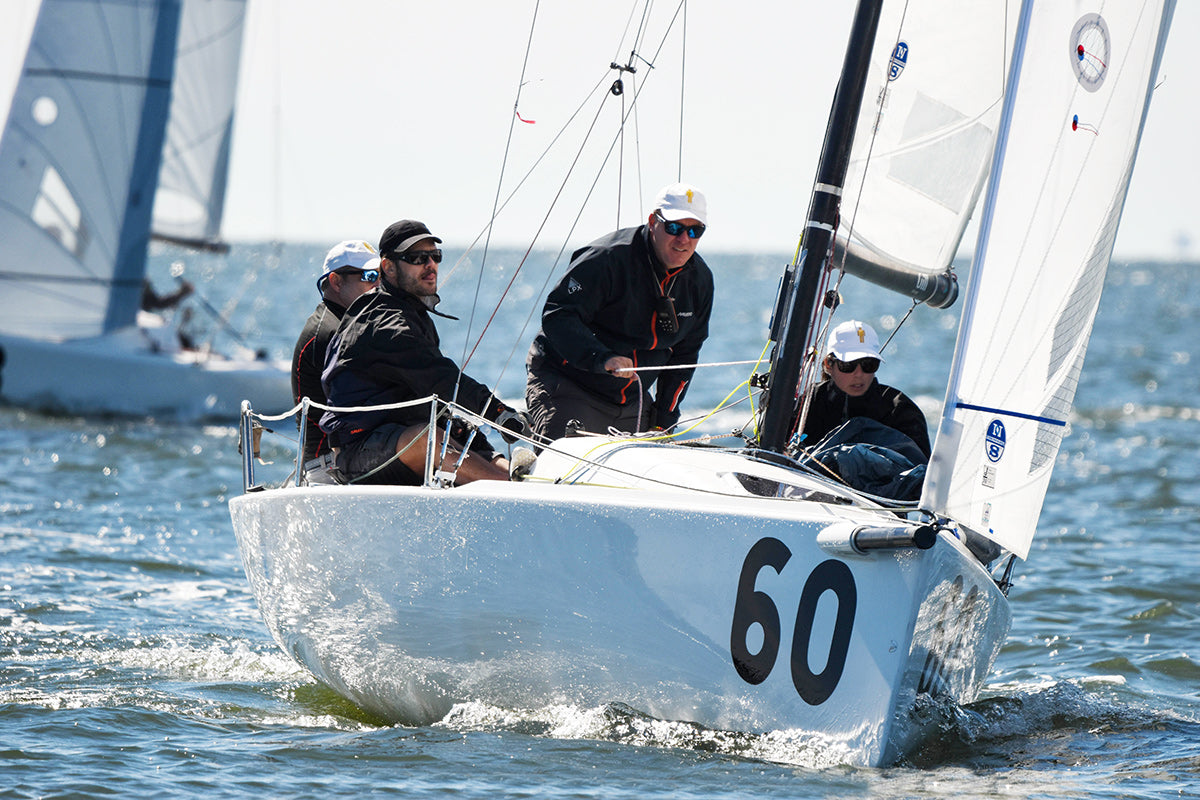
J/70 LESSONS FROM THE DAVIS ISLAND WINTER SERIES
J/70 LESSONS FROM THE DAVIS ISLAND WINTER SERIES
North Sails Expert Allan Terhune Shares Tips From Sailing the J/70
Allan Terhune on Building A. 📸 Chris Howell
This past weekend concluded a great Davis Island Winter Series in the J/70 class. With a variety of conditions and great hospitality from DIYC, this series has become an impressive example of how winter circuits and regattas should be run.
Equally impressive were the results of North clients: 1,2,3,5,7,9 overall and 1*,2*,4,5,7 in the Corinthian division. Congratulations to series winners Brian Keane and Peter Fiery.
Here are the top 5 lessons we took home from the regatta.
Keep the rig versatile
Before each race, I made sure my “normal” setup had the backstay at the middle of its range. Many teams set up more toward the extremes and then struggled with transitions in the puffy conditions. To me, nothing is worse in the flat water off DIYC than having a main too full to depower.
Be patient with the shifts
The easterly winds were both shifty and puffy, and it was impossible to be in phase all the time. When we were on the correct side of the shift, our goal was to go as fast as we could. If we were on the wrong side, we tried to get back in touch to attack on the next shift. It was easy to chase the breeze and continue to lose ground.
Top of the cone: be proactive
The courses were relatively short for 50 boats, so the first weather mark was very crowded. The boats that were reacting to traffic were the teams that were losing. The winners visualized what the next moves would be while keeping an open mind. It is OK to duck a boat or two if you know it will get you to an open lane or layline.
Downwind mode matters
There were times when you were planing, and times when you were not. The biggest mistake I saw was not changing modes decisively. Once the boat behind starts to plane, you have to find a way to match. Even if you aren’t in the same breeze, get off the wing and sail towards the next puff.
Keep calm and sail on
In such variable conditions, it’s very easy to get frustrated about your performance. No matter where you are on the race course or in the fleet, looking forward and being positive is key. Not panicking about your traffic or situation will make the rest of the day go that much better.
Heading to the Midwinters? We have sails in stock ready to be shipped to your door.
Peter Firey’s Phoenix, overall Series winners in the Corinthian division. 📸 Chris Howell
Brian Keane’s Savasana (right), overall winner of the 2020 Winter Series. 📸 Phill Pape
READ MORE
READ MORE
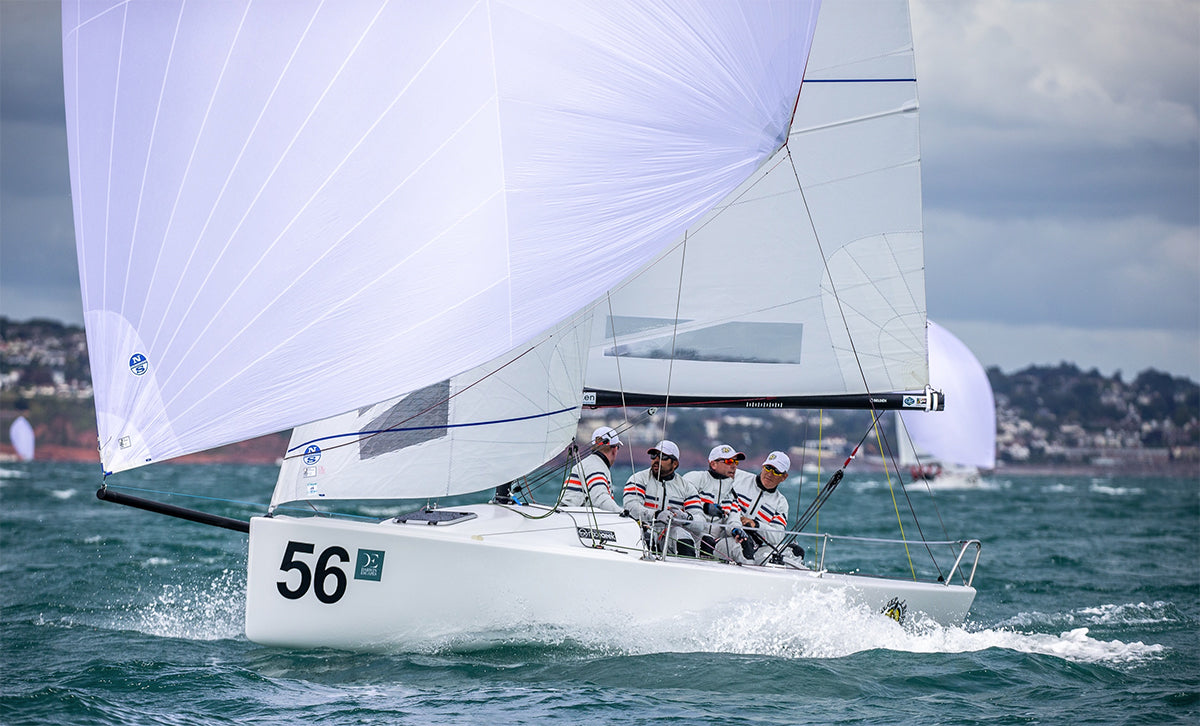
HOW TO CHOOSE THE BEST J/70 JIB
HOW TO CHOOSE YOUR J/70 JIB
North Experts Explain The Advantages of the J-2 and J-6
2019 J/70 World Champions powered by the J-6 jib, F-1 mainsail and AP-1 spinnaker. 📸 Sportographytv
One of the common questions we get at North Sails is “Which jib is better, the J-2 or the J-6?” The answer is: Both jibs are great, but they fill different roles. We sail in different venues, have different sailing styles, and have different teams and equipment. So, after a lot of development and testing, we have two amazing jibs in our inventory. Understanding how the sails perform will help you make the right choice on your next order.
First, let’s start with what the sails have in common. Both are made out of our exclusive NPC Radian fabric. North NPC Radian makes possible a more sophisticated radial panel construction and offers superior shape holding over all other materials. Both the J-2 and the J-6 have been designed to take advantage of NPC Radian’s benefits.
Both jibs are constructed with a high clew, to allow for in-hauling and proper jib trim.
The other commonality is the results they produce. These jibs are fast and deliver top performance on the race course. In 2019, the J-2 won the Europeans, while the J-6 was used to win the Worlds and the North Americans. At the NA’s we saw both jibs finishing in the top four and winning races.
2019 European Champions powered by the J-2 jib, XCS-2 mainsail and AP-1 spinnaker. 📸 Zerogradinord
Here’s What Makes Each Jib Special:
We repeat: Both jibs are great, but they fill different roles. Which will be right for you depends on where you sail, your team, and your style. We can confidently recommend either, because no matter which jib you choose, the top guys are translating all that development and testing into success on the race course.
Read also: Which mainsail is best for your J/70 team?
For more info on the world’s fastest J/70 sails, visit the J/70 Inventory page.
2019 J/70 World Corinthian Champions powered by the J-2 jib, XCS-2 mainsail and AP-1 spinnaker. 📸 Sportographytv
Oivind Lorentzen’s Team Nine, 2019 North American Champions powered by the J-6 jib, XCS-2 mainsail and AP-1 spinnaker. 📸 Chris Howell /J/70 Class Association
READ MORE
READ MORE
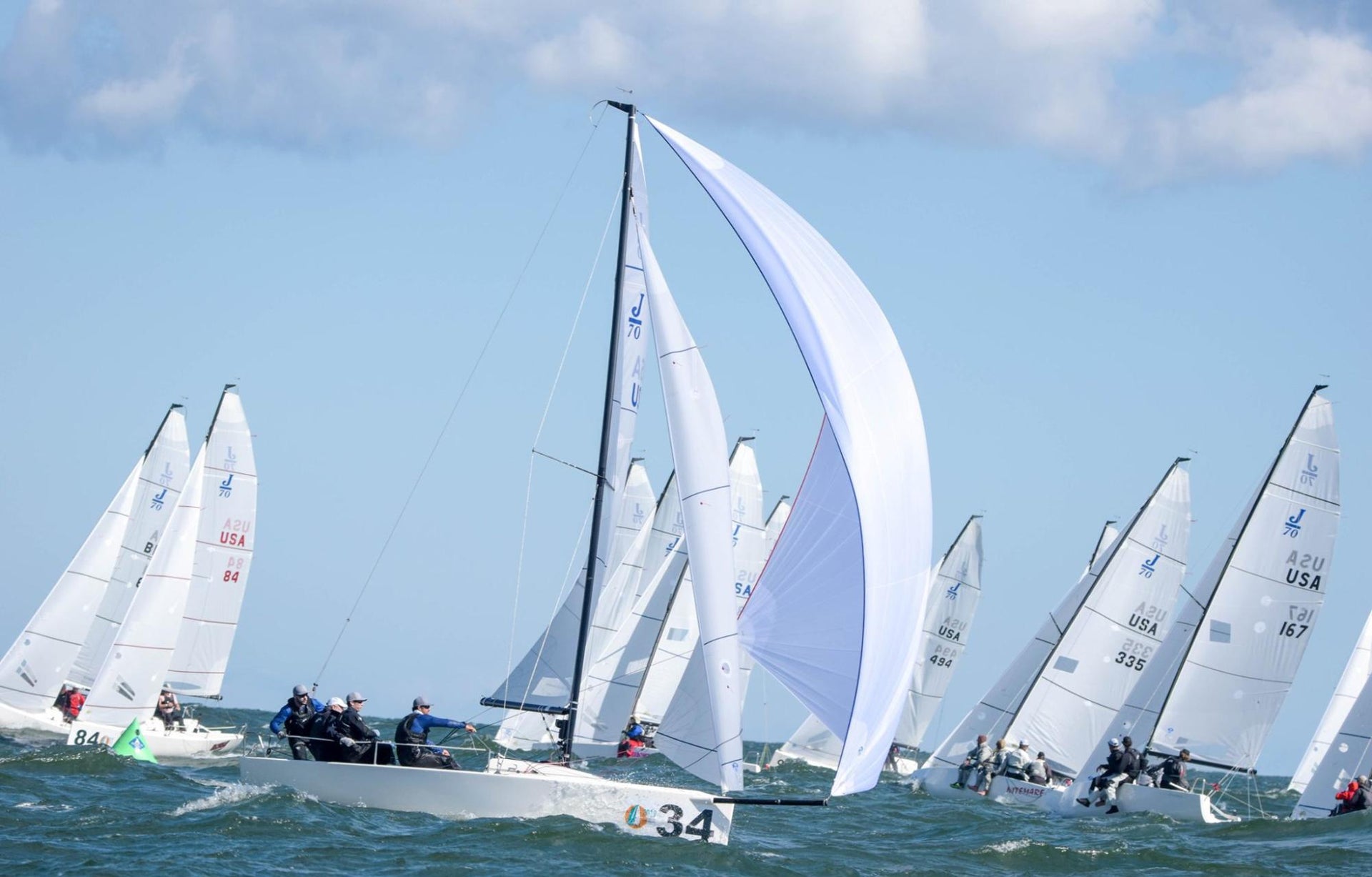
WHICH MAINSAIL IS BEST FOR YOUR J/70 TEAM?
WHICH MAINSAIL IS BEST FOR YOUR J/70 TEAM?
A Complete Guide Considering Rig Tendencies and Batten Choices
Team Rimette at the North Americans powered by North F-1 mainsail. 📸 Chris Howell/J70 Class Association
Trying to stay up to date with all the latest testing and sail development in a highly competitive class like the J/70 can be quite daunting. How do I pick the right sails? Does crew weight matter? Does the venue matter? What about my mast? How do I know how much pre-bend I have? What do I do with all these battens?! There is a lot to think about for sure, but in this article I will try to simplify some of these elements to help you make the right choice for you and your boat.
Choosing the right mainsail for your team is imperative. One of the major factors in designing a mainsail is the bend characteristics of the mast. With over 1,500 J/70s built, there is bound to be a bit of variance in bend characteristics – especially now that there are two different brands of spar out there – the Southern and the Selden. Not only are there inherent differences in stiffness, but where you carry your rake (more rake = more bend) and how swept your spreaders are will also greatly impact the bend tendencies. North Sails offers two brilliantly designed maisails, both of which are garnering tremendous results around the globe. By getting to know your mast, and learning how to use your battens and rig tune, you will be able to have success with either sail. But you may find that one sail will fit your rig better than the other.
Let’s keep it simple to start out – there are two choices – the XCS-2 and F-1. The XCS-2 is fuller than the F-1 and was therefore designed to fit perfectly with masts that tend to carry more bend. A bendier mast requires a fuller sail shape so that it won’t invert too quickly when the breeze comes up and the mast starts bending. The F-1 is a flatter overall sail designed to accommodate stiffer masts. If the mast doesn’t bend very much, you need a flatter sail to avoid extra drag – especially in light air when there is not enough pressure to bend the rig and it’s too light to use backstay.
How Can You Tell Which Sail is Best For Your Mast?
The first thing you’d want to check is your pre-bend at “base”. You will need the mast up with the upper shrouds set to a tension of 16 on the PT2 Loos gauge. For the lower shrouds, set them so they have a tension of 10 on the gauge with the mast looking straight, and then take another 2 turns off each lower shroud so they are loose. You’ll want to find a pre-bend checker which is essentially a ruler that can be hoisted up the mast track (see photo below). Hoist the bend checker up the sail track on the spinnaker halyard (don’t forget to tie a line to the bottom of the checker so you can pull it back down!). You want to get it just above the spreaders where the max bend is. Now you will pull the main halyard up against the gooseneck (pinch it right into the bottom of the sail track). As you look up the mast, you’ll see the main halyard coming in contact with the bend checker. Read the bend checker to determine how much pre-bend you have at “base.” We’ve found that the range can be anywhere from 1.25” to just over 2”. Quite a range!! If your mast shows less than 1.75” of pre-bend, it’s likely that the F1 will fit your rig better and if you’re over 1.75”, then it’s more likely a good fit for the XCS-2.
What if your mast is right at 1.75”?? Perfect! Try both! (Kidding but probably not a bad idea!). Another test you can do to learn about your mast stiffness is to wind the rig all the way up to the our tightest recommended rig tune setting which would have both your upper shrouds and lower shrouds reading 29 on the gauge. The number of turns it takes for you to get to this setting will tell you a lot about your mast. Again, we have found quite a bit of variance here from rig to rig. If it only takes you about 7 turns on the uppers and 5 turns on the lowers to achieve these tensions, that is a sign that your mast is quite stiff and probably better suited for the F-1. If it takes you closer to 11 turns on the uppers and 8 on the lowers, that is a sign that your mast is bendy and probably better suited for the XCS-2. Nine turns on the uppers and 7 on the lowers would be somewhere in the middle. One more telltale sign you can use to determine your mast stiffness is by observing the overbend wrinkles on the main while sailing upwind. There needs to be enough wind so that you’re using 70-100% of your backstay. So your rig tune should be tight. While sailing, play through your range of backstay and observe where your main is showing the biggest overbend wrinkles. They should be all below the window in the luff of the main (to see the jib leech) until you’re at the point of full inversion. If you see a very large “hinge” in the main that goes from the forward end of the bottom batten, up to a point above that luff window – that is a sign that your mast is on the bendy side and probably better suited for the XCS-2. If you never get to the point of the full “hinge” and all of the overbend wrinkles stay below the luff window, that is a sign that your mast is on the stiff side and probably a better fit with the F-1.
No matter which mainsail, you end up choosing, you have a lot of range depending on which battens you put in. Using stiffer battens will give you a flatter sail shape while softer battens let the sail become fuller. This is extremely useful when trying to make your sail shape fit the mast in a given condition. If you decide to use the F-1 main but are sailing in a venue where you know you will want a little bit of extra power (say it’s overly lumpy compared to wind strength), you can error on using the softer battens in the Main to help give the sail extra depth for more power. Conversely, if you have the XCS-2 main but want the option to keep it flatter (say it’s blowing 14 knots but dead flat water) you can go to heavier battens to get rid of some depth in the main.
The key takeaway here is that is very important to learn your rig tendencies so you can make the best decision possible for your team whether you’re looking for your all purpose sail, or for a venue specific sail choice. Combining this knowledge with the correct batten choice will give you peace of mind in knowing that you can achieve the perfect sail shape for any condition. As always, consult your favorite North Sails J/70 expert for more information or any questions about your sail choice!
READ MORE
READ MORE
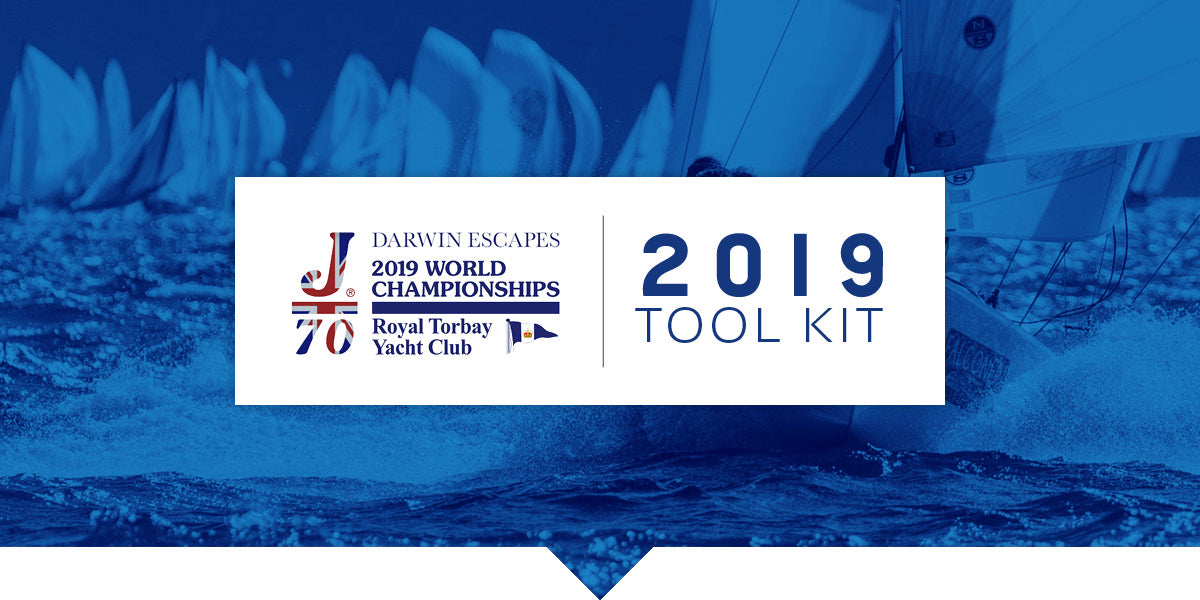
J/70 WORLDS TOOL KIT
Get The Most From Your J/70 Racing Experience!
Teams around the world are heading to Torbay in Torquay, England for the much anticipated J/70 World Championships. Our 2019 tool kit features tips on boat speed, boat handling, crew techniques, and much more from our team of J/70 experts.
#NSVictoryList
There is no better performance test of a one design sail than the results it produces. Add your team to the #NSVictoryList!
What To Expect in Torbay
Royal Torbay Yacht Club is excited to host the 2019 J/70 World Championship. We spoke with North Sails expert Charlie Cumbley to learn what sailors should expect when they leave the docks.
Register For Free Daily Weather Forecasts
North Sails has partnered up with our expert friends at Sailing Weather Service to provide complimentary daily weather forecasts. Register now and receive these daily updates sent directly to you each morning.
J/70 Upwind Trim Tips
North Sails expert Zeke Horowitz shares important J/70 upwind sail trim takeaways from his recent experience at Long Beach Race Week.
Light-Air Headstay Sag & Jib Trim
What do we look for in headstay sag to optimize jib trim for a variety of light-air conditions? World champion Tim Healy explains.
Managing Your Risks
North Sails expert Zeke Horowitz talks about placing your boat in the right place on the race course to make gains and minimize losses.
Light Air Speed Notes
A week of intense training with the Japanese teams in Newport, RI, taught Tim Healy a lot about light air tuning and trimming.
Five Downwind Modes
Displacement mode, wing-on-wing, or full plane? Understanding the J/70’s different downwind modes will help you choose the right option.
Fine Tune With North
Find your groove. Get your numbers. Be confident in all wind conditions. After countless hours sailing, testing, and competing in the J/70, our tuning guide will help you achieve race-winning speed.
Telemetry Testing for Faster J/70 Sails
A sail design can be improved, but unless you understand how to trim and tune it properly, you’re not going to get the benefit. Here’s a look at the North Sails technology that goes into designing fast J/70 sails.
Get Up To Speed
Pulling all the pieces together can be challenging. The North Sails J/70 Speed Guide leverages our expertise to help you make the most of your one design sailing.
Our Experts Make It Happen
Have questions? Contact your local J/70 expert today for more information on choosing the right J/70 sails.
READ MORE
READ MORE
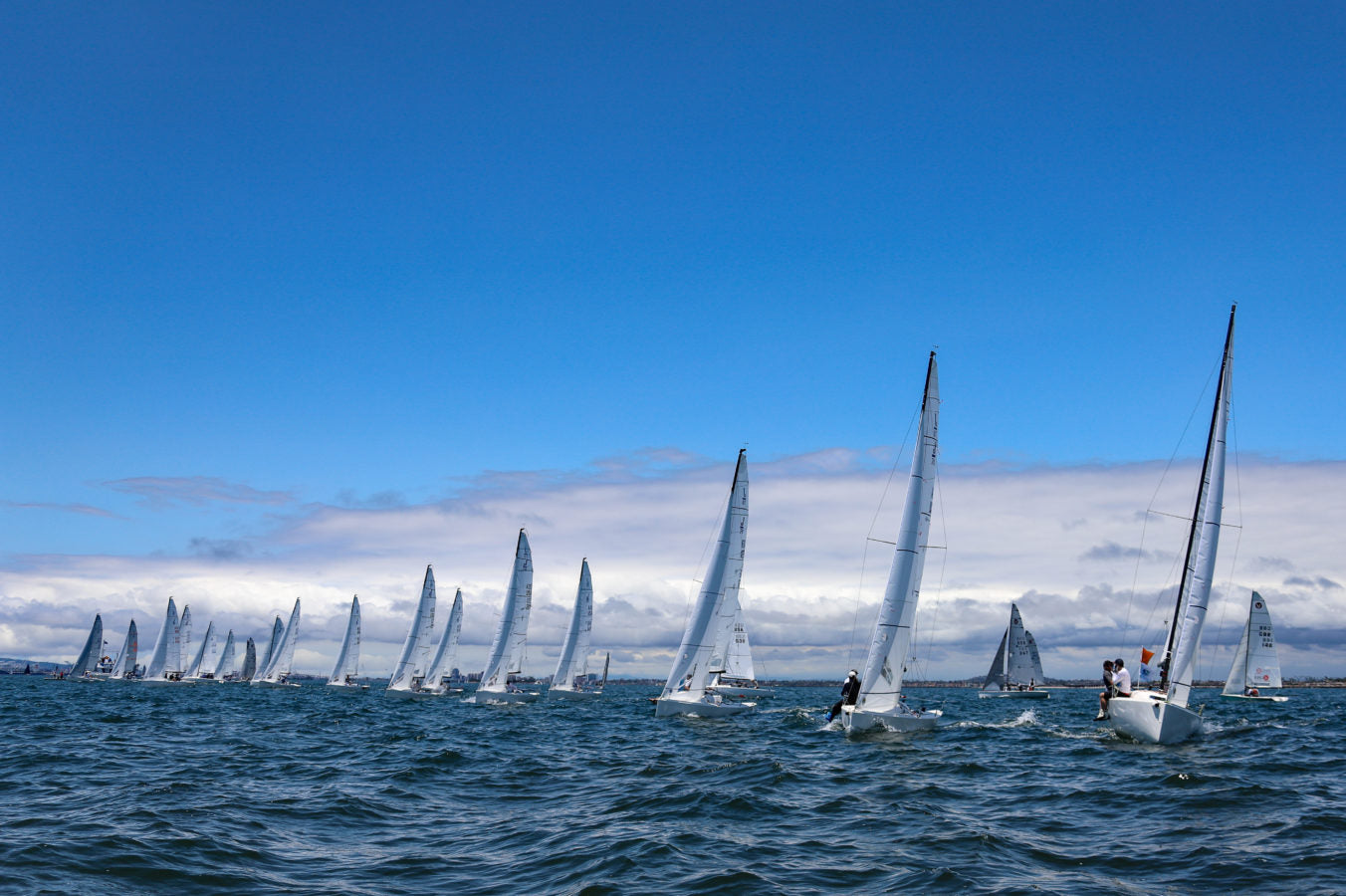
J/70 UPWIND TRIM TIPS
J/70 UPWIND TRIM TIPS
Finding Your Groove In Building Pressure
📸 Bronny Daniels / Joysailing.com
North Sails expert Zeke Horowitz shares important J/70 upwind sail trim takeaways from his recent experience in California, USA at Long Beach Race Week. Zeke sailed with Jeff Janov on Minor Threat, and they tied for first place with just 18 points in the seven race regatta.
Less than 10 Knots
When the breeze is under 10 knots and you are looking for power, be sure to get up to speed by “pressing” on the jib before trying to grab any height. In these underpowered conditions, height comes from achieving flow over the keel, NOT from simply trying to point the boat higher. By pressing on the jib, you will power up the sail plan and allow your crew the chance to pressurize the weather rail. This helps achieve max flow on the keel, and your boat will start lifting.
Your leeward jib tell tale should be “nervous” most of the time and you should not sail any higher than tell tales straight back. It’s imperative to get your rig loose enough to help the headstay sag. You can always snug up the headstay by tightening the backstay if you get a little puff. Two turns off the cap shrouds and two turns off the lowers from base is probably about as loose as you should need to go (4-7 kts)*.
Trim the main so you have a nice open leech (tell tales streaming) until you are able to get weight on the rail. Once the weight is up, you can trim the main hard enough to begin seeing stall on the leech tell tales.
*The exact number of turns depends on your rig.
📸 Bronny Daniels / Joysailing.com
Above 15 Knots
When sailing in over 15 knots and chop, be decisive about your “modes” upwind. Take note of the wave angle on each tack and decide which mode you want to try on each board. For example, if one tack has the wave direction more on the bow, you may want to try a “bow down mode” to keep the speed from crashing when you hit a hard set of waves.
Bow-Down Mode
In “bow-down” mode, try centering the traveler car, pulling the backstay hard enough to just see inversion wrinkles in the middle of the main, and pulling the vang hard enough to see some inversion wrinkles down low. Play the mainsheet a lot to maintain a steady heel angle, with the jib tell tales straight back or the inside one just lifting. The name of the game here is speed, so set a target speed number and don’t let the bow come up until you’ve hit your target.
📸 Bronny Daniels / Joysailing.com
Higher Mode With Flat Boat
If the waves are more side-to, you can try a higher mode with a flatter boat. Bring the traveler car 1/3 – 1/2 of the way up. You’ll have the backstay tight, but not so tight that you see any inversion, and the vang will also be snug, but not so tight that you get low main inversion. The mainsheet will be eased a little more overall to help keep the boat flat. In this mode, you keep some power in the main with the higher traveler and fuller main, but you’ve got more twist in the leech which spills some power to keep you flatter.
It’s imperative to get the boat up to speed before trying to point, but with this mode, you can achieve more keel flow by keeping the boat flatter. At times, the driver may feel a touch of lee helm that they must push against, until the main trimmer ‘catches up’ by bringing the mainsheet in slightly. This mode is not as ‘forgiving’ but it can be lethal when the boat is up to speed in open water.
*With this second mode, you might need to try a little less inhauler to help keep the headstay straighter, since your backstay and main sheet are not trimmed quite as hard.
Learn more about North J/70 products
📸 Bronny Daniels / Joysailing.com
READ MORE
READ MORE
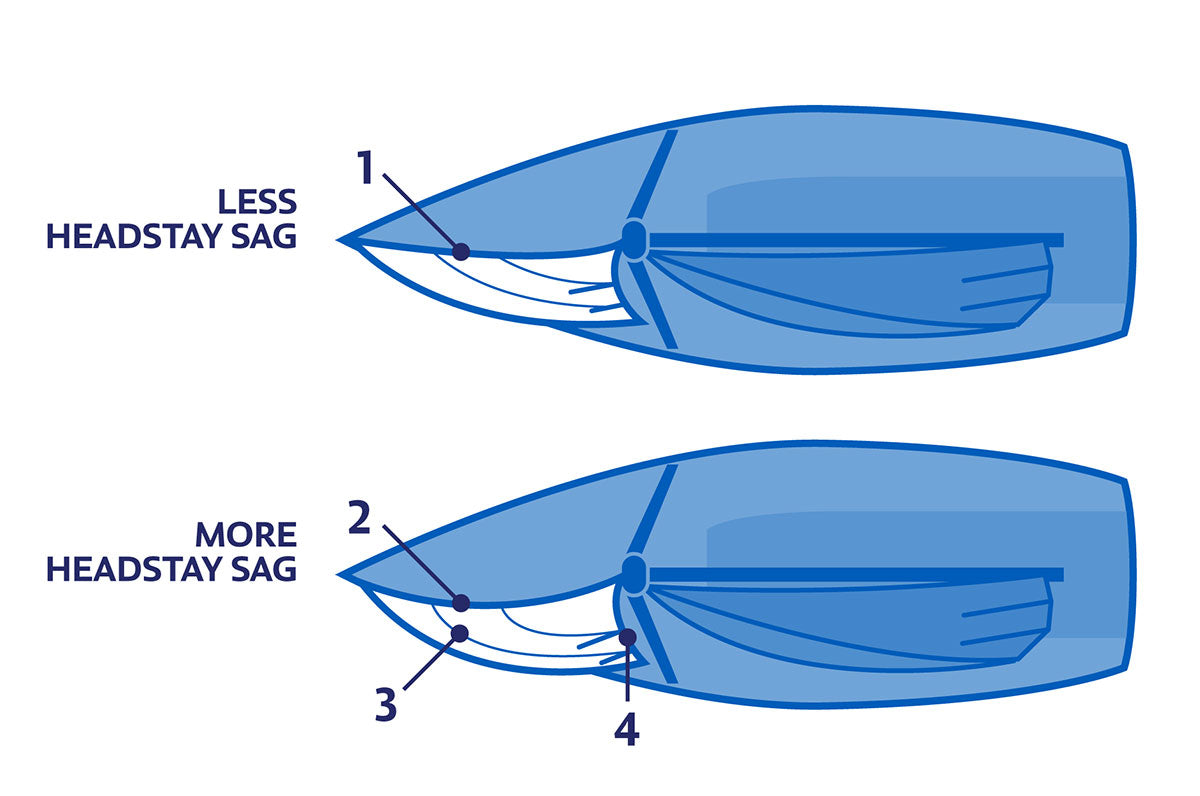
J/70 LIGHT AIR HEADSTAY SAG & JIB TRIM
J/70 LIGHT-AIR HEADSTAY SAG & JIB TRIM
What do we look for in headstay sag to optimize jib trim for a variety of light-air conditions? One Design expert Tim Healy explains.
1. The boat at top has a tighter headstay, which gives the jib a finer entry, less power and less drag. 2) The boat below has a sagged headstay, which gives the jib more depth and power. 3) Watch for a “knuckle” in the front of the sail if the headstay sags too much, which can make it hard to point. 4) The jib leech is tighter on this boat; too much headstay sag will close the slot between jib and main.
A couple of years ago, I sailed the Bayview One Design Regatta (BOD) in Detroit with Skip Dieball, the Etchells World champion that year. Skip knows a thing or two about making sailboats go fast and it was fun to interact with him and get his input and feedback on the J/70. I wrote an earlier version of this article after that regatta, and then reread the story last summer while we were preparing for the J/70 Worlds in Marblehead. The Worlds turned out to be windy, but we sailed two light-air regattas in Newport, RI, beforehand, and this reinforced and refined some of my ideas. I hope some of these notes can help you understand your J/70 setup better and help you go faster.
The regatta conditions that year in Detroit were largely light with occasional moderate chop, so rig tension, headstay sag, and jib trim were especially important factors in setting up the boat. Skip and I regularly discussed the synergy between these three variables to answer the question what should we look for in headstay sag on the J/70 to optimize jib trim through a variety of conditions? Afterwards, I gathered my thoughts on how one affects the other and how to tune and trim for maximum performance with a focus on light air, and I have augmented those with insights gained during 2018 summer racing.
How J/70 headstay sag improves pointing:
The shrouds should be tensioned so that we have 2-4 inches of headstay sag at the mid-stripe of the jib and 1/2 to 3/4 inch of mid-mast side sag. The basic idea is that headstay sag adds depth to the jib.
Adequate headstay sag in light to moderate wind reduces the need for weather sheeting the jib. Sagging the headstay powers up the middle of sail, but fine tuning the lower section is important. Tension the weather sheet so that the clew is just above the edge of the cabinhouse to 2” off the cabinhouse. In flat water, you can trim 1” inside the cabin house edge, maximum.
The mast side sag is an indicator that the mast is free to move/flex with little restriction by the lowers. This will allow the mast to be more flexible and dynamic in light air and increase headstay sag.
The middle of the jib luff sags not only aft but also to leeward, which changes your angle of attack to the wind.
At the same time, the mid-leech “rotates” slightly to weather, reducing the need for windward sheeting referred to above.
The net result of the headstay sag is that the boat can point higher. So how do we get there consistently?
Light Air & Flat Water
In light air and flat water, it is important to create the power in the sail plan that the J/70 wants, while keeping flow across the sails. In lighter conditions and flat water, the jib needs depth for added power and sagging the headstay is the easiest and most direct method to create depth in the jib.
When the headstay sags, it not only sags to leeward but also sags aft, towards the jib tracks, which puts the luff closer to the leech, thereby adding depth to the jib. What we find is at the middle section of the jib, when it is sagging 4-6″, the luff of the jib is actually falling off to leeward slightly and the leech, by default, “rotates” to windward just a bit. This creates a scenario where the middle of the jib luff has a better angle of attack to the wind and, because of this better angle of attack, you will be able to point slightly higher without luffing or losing flow over the front of the jib.
In this scenario, when the mid -leech “rotates” to windward, the effect reduces the need to windward sheet as aggressively because the leech has, effectively, moved inboard already because of the sag.
When you have this setup correctly, it is still important to make sure the jib leech tell tales are flowing 90%-100% of the time so that the airflow stays attached to the jib, and the sailplan does not have any “breaks” or “stalls” in the airflow. That said, it is OK (and actually encouraged) to test to make certain you are at maximum trim by sheeting in periodically until you see the jib leech telltales stall slightly, then ease out till they are full streaming. This is your jib sheet trim range which may be as little as 1” of sheet.
It is important to stay on top of your rig tensions in these conditions and find the settings that work best for your rig and driving style. In general, rig tensions that are loose enough to create 4″ of sag are good for light air and flat water. As you can see in the tuning guide, the “base” setting is 16/10 minus 2 turns on the lowers for 10 knots so when the breeze is quite light (0-6 knots), I will loosen 1-2 turns on the uppers and between 1-2 turns on the lowers. This gets my uppers closer to 14 and the lowers are very loose (they do not register on the gauge). The mast side sag at the spreaders should be about a 1/2 inch when the lowers are loose enough. This side sag is also a signal that the mast is free to bend forward as well as off to the side. This forward bend is good in light air to create a flatter main that can be sheeted tighter without stalling the leech. This will also help pointing ability.
Light Air & Choppy Water
When chop is introduced into the picture, a loose rig is still good, but you may find that the rig will pump too much in heavy chop. This is normal, but in order to temporarily stabilize the rig, pull on enough backstay to take the deflection out of the backstay flicker at the top of the mast and put a small amount of tension to pull back on the mast. This should minimize the pumping of the rig and headstay and keep a more consistent sail shape through the chop. As soon as the patch of chop is over, release the backstay to get slightly more sag back in the headstay.
Final Thoughts
The J/70 is one of the few boats where weather sheeting is effective, but it has to be done with an eye on the headstay sag. With a saggy headstay, you will tend to use less weather sheet. With a tight headstay, in general, you can use more weather sheet. Keep in mind that the angle of attack and leech position will change with the headstay sag, and adjust your weather sheet accordingly.
These are tips that can make a big difference in light air speed. Feel free to contact Tim Healy or any member of the North Sails One Design Team if you have other questions on how to make your J/70 boat GO BEYOND.
For more on this subject, read “Why is Headstay Sag Fast Upwind?”
For more on the J/70, read “J/70 Speed Guide.”
READ MORE
READ MORE

INTRODUCING THE NEW F-1 MAINSAIL FOR J/70 CLASS
NEW F-1 MAINSAIL FOR J/70 CLASS
Flexibility, Versatility, Balance, And Speed
The One Design team at North Sails are driven by our commitment to find solutions for our customers and to always find more speed and boat performance. This is why the new F-1 mainsail was tested and developed within the competitive J/70 Class and why it is now available to everyone. Developed to fit the Selden mast or a Southern Spars mast with a stiff set-up, the F-1 mainsail is a flatter design, balanced top to bottom to match mast bend in all conditions. Designed to be user-friendly, the F-1 is easy to trim, and tune, to produce maximum speed on the water.
“Development on the F-1 main started with sail testing sessions in the early spring of 2018, using the North Sails two boat testing telemetry system,” commented North designer Mike Marshall. “Using the results data and the power of the North Design Suite, were able to, in very few iterations, come up with a sail that much more effectively fits the Selden mast. An additional benefit is the vertical shaping in the sail is much more balanced to work well through the entire range of conditions.”
Commenting further on the development of the F-1 sail, North Sails One Design expert Max Skelley added “North Sails were invited to join Bruno Paquenelli’s Team Stampede to campaign for the 2018 J/70 Worlds in Marblehead. It quickly became apparent that the standard mainsail set up is quite different with the Selden mast. Primarily, in light air they were unable to flatten the main enough or get the draft far enough back to give the boat some helm; the shape looked full and draggy. We worked with Mike Marshall to flatten the vertical profile of the sail, and after several trials, we reduced the luff curve by enough to handle the very straight fore and aft mast set up the boat required in light air. The result: a very even sail shape was achieved, with resulting balance and speed.”
“Developed to fit the Selden mast or a Southern Spars mast with a stiff set-up, the new North Sails F-1 mainsail is a flatter design, balanced top to bottom that reacts to mast bend in all conditions. Designed to be user-friendly, the F-1 is easy to trim, and tune, to produce maximum speed on the water.”
At the J/70 Worlds, in a wide range of challenging conditions, Stampede’s upwind speed was outstanding and got the team top finishes, with equally strong results in 15+ knots of wind. As North One Design expert Eric Doyle noted “With the J/70 being so tender and light, we were able to flatten the main more than ever before, and this let us put the bow down and go fast when we needed to. The F-1 main allowed us great versatility in the big fleet. We could trim hard to point and hold our lane off the starting line without stalling the sail too much.”
“The F-1 proved it was ready for market after the 2018 J/70 Worlds,” explained Tim Healy, President of North Sails One Design. “The regatta was ultra-competitive, and the new F-1 finished an extremely close second place, just a single point away from winning it all. This battle-tested result was the conclusion to our sail testing.”
The F-1 mainsail is a new cross cut design featuring less camber when compared to the North XCS-2. Standard Features include one gaff batten, two full-length battens, two leech battens, vision and spreader windows, radial teardrop patches, spreader chafe patch, trim stripes, leech telltales, Class insignia, adjustable leech and foot cords, and roll bag. The F-1 sail is now available for any team competing at Charleston Race Week or for the summer season.
READ MORE
READ MORE
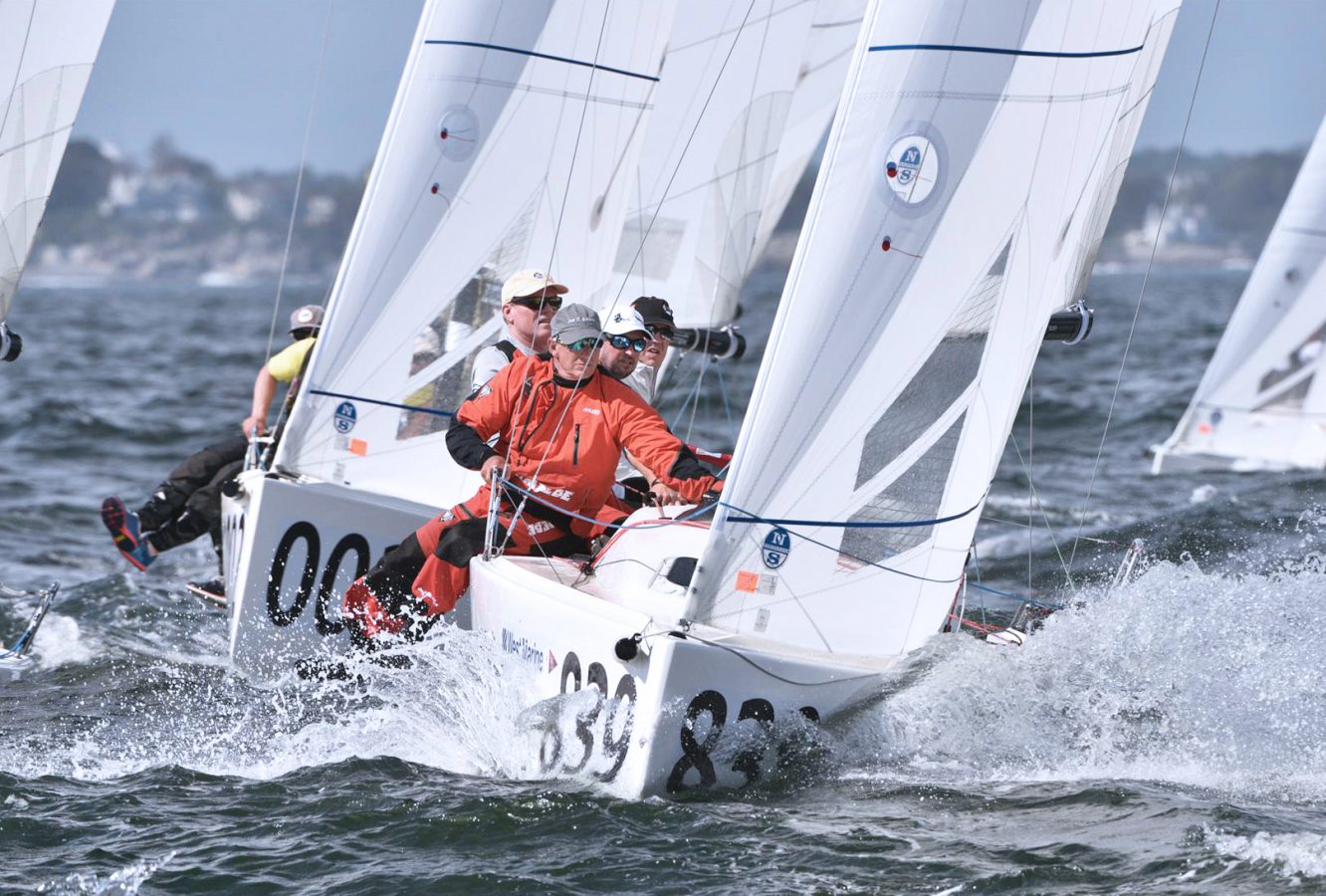
J/70 WORLDS: NORTH SAILS DEBRIEF
J/70 WORLDS: NORTH SAILS DEBRIEF
Considered One of the Toughest Regattas, Many Lessons Learned
© Chris Howell
The 2018 West Marine J/70 World Championship may have been one of the most competitive and best attended one design events yet. Eastern Yacht Club welcomed 91 teams from 18 different countries, and sailors had an exciting variety of conditions for the eleven races in four days. The allure of such an event was too much to pass up, and more than a dozen North Sails experts were on the starting line. Whether crewing for clients and friends or organizing their own team, the depth and expertise of our J/70 experts was on full display with many on the podium and even more in the top 10.
North results:
Corinthian Division: 1,2,3,4,5 – Congratulations Luis Bugallo and team Marnatura
Open Division: 2,3,5,6,8,9,10 – Seven out of the top 10 powered by North (See team/sail chart)
We asked our sailors to share both their impressions and lessons from the J/70 Worlds.
Max Skelley, Stampede – 2nd Place
Managing that many boats and keeping top finishes throughout the event is an impressive feat. What were the key things that you attribute the consistency Stampede was able to deliver?
MAX – We knew going into the event that we had really good upwind speed. Having Tim Healy as our tuning partner throughout the summer was a big help with narrowing down rig tune/sail trim settings. Being able to use our speed to dig our way out of tough spots began to dictate our tactics . We always tried to start in low density areas somewhere near the middle of the favored half of the line, not being so leveraged to one side that we couldn’t dig our way out if the shift didn’t go our way.
On race five we were persuaded to start at the windward end because the two previous races, hard right was really paying. We were able to win the start at the windward end and were first boat to tack to port which was the race winning move in the two previous races. Unfortunately, the left came in hard on the first beat and we rounded in the 50’s. We were able to fight back to the low thirties but the race still ended up being our drop race. We learned a lesson about risk / reward and stayed away from the ends for the remaining of the event using patience and speed to consistently get to the front of the fleet.
Team Stampede, 2nd place at the 2018 J/70 World Championship. © Photoboat
Eric Doyle, Stampede – 2nd Place
You are a boat speed guy. What were the keys to helping keep the boat going fast?
ERIC – We had worked hard all summer on our rig settings, we had confidence of when to change the rig tension for the wind strength. I was trimming the jib and one interesting trim technique that we started during the world’s was that we rarely moved the jib lead. It lived in the #6 hole 95% of the time and we just used the halyard to adjust and jib sheet tension to fine tune the jib.
In the heavy air races, when a lot more halyard was required, we had to ease the sheet about an inch and use the appropriate amount of in-hauler, less in the big puffs and more in the flatter, lighter spots. When it was lighter and we eased the halyard to make the jib fuller overall, it lowered the clew, effectively moving the lead aft, so we trimmed about an inch harder on the sheet and used more in-hauler. It seemed to work better as it is impossible to change the lead without tacking, but the halyard and sheet are readily accessible at all times.
How important was it to make sure your tuning was spot on and was there ever a time where the the conditions didn’t match your setup and, if so, what effect did that have?
ERIC – We always looked to set the boat up to be fast for the first half of the first beat so that we could hold a lane and get to the first weather mark in good shape. Most of the time it worked out but on the 4th day with all the rain squalls coming through and huge changes in velocity, after the first race we just went with a slightly tighter rig from base, +4 and +3, and used the backstay, traveler and boom vang much more aggressively. When the boat felt bad for Bruno, we made sure to remind him that we were out of tune and that he just had to deal with it! In the big fleet with lots of chop in general it was better to get caught a little on the loose side than too tight.
Team 3Ball JT, 3rd Place at the J/70 Worlds using the North J-6 Jib. © Chris Howell
Allan Terhune, 3 Ball JT – 3rd Place
After four days of racing and 11 races the top three teams all had over 100 points and were within three points of each other. Your team had some big scores early in the event. What turned the week around for your team to get back to the top of the leaderboard?
ALLAN – For sure the regatta didn’t start as we hoped. The big thing for us was not to panic and to take a look at everything to see where we could improve. We talked to our training partners and other folks and realized we had to be more drastic in our rig adjustments for the waves and wind. It was a hard event. It was not easy to get finishes in the 20’s.
The regatta was a good lesson in the fighting until the end and that the event is never over, till it’s over. If you would have told me that we would start with 18,22,25 and go into the last day three points out of the lead, I would have said you are nuts. It proved that World Championships are marathons and you have to keep pushing. Our team did that well. We always kept adapting and trying new things.
We were one of the few teams to use the North J-6 jib, and I think it was the right choice for us for sure. We found it gave us more range for the conditions there. It was a sail we were very comfortable with and we were glad we chose in the end.
Team Any Colour featuring the new North J-2 High Clew jib. © Chris Howell
Zeke Horowitz, Any Colour
Crewing for your friends, the Furnary Brothers, what setup did you find worked best to help them get in the groove to be consistently fast?
We used the XCS-2 Mainsail and we busted out a J-2 High Clew for the first time at this regatta. We were extremely happy to find the transition to the J-2 High Clew to be quite easy. It’s a beautiful, forgiving sail with all the modes you need. We stuck pretty close to the North Tuning Guide and found the setup to have the power we needed to fight through the big waves and chop while being easy enough to de-power and keep the groove nice and wide for Scott on the helm.
In the higher winds, we made sure to fine-tune our lowers so that there was no mast sag at the spreaders and if anything, a hint of poke to weather. This helped us achieve maximum head stay tension even when the main sheet had to be eased. Keeping the boat flat (both upwind and downwind) was HUGE.
The J/70 Worlds was a challenging regatta. What did your team do so well to get a top 10 finish and what needs work for next time so you don’t “leave any points on the water”?
ZEKE – For sure this has to be the most challenging regatta I’ve ever competed in. The depth of talent was insane and the sheer number of boats made it all the more difficult. Not to mention some pretty wild conditions! I think every single team felt that they left a myriad of points on the table – I know we did.
One thing we talked about as team before the regatta is that we wanted to play every decision in the race as if we were trying to just be top 20. We knew that if we averaged somewhere in the top 20, we’d be very happy with the result. So all our big picture game plans, tactical decisions, and boat handling maneuvers were made with conservative strategies, (except for the time we crashed into Tim Healy at the weather mark-Sorry, Boss). Scott and Evan Aras (main trimmer) did a fantastic job with starting and we knew that if we could be punched off the line, that would most likely get rid of about 50 boats that had bad starts.
From there it was really just about lane management and looking for opportunities to put the boat in places where we could make gains.
One thing that would really help us next time is continuing to improve on downwind modes. There are so many different modes to consider off the breeze and it’s amazing how much can be gained and lost by doing it correctly.
Team Enfant Terrible and the perfect shape of the new North J-2 High Clew jib. © Zerogradinord
Tim Healy, New England Ropes
What did you learn about North’s standard J70 designs this week that J70 sailors should know when thinking about investing in new sails?
TIM – We used the XCS-2 mainsail, J-2 High Clew jib and the AP-1 spinnaker. I chose them because I believe they are the fastest and most user friendly sails available. They allow for the power and speed to acceleration of the line in choppy conditions and to power up quickly out of tacks. The J-2 High Clew is slightly fuller than the J-6 and is less weather sheet dependant which, I feel, makes getting “top speed” trim correct more quickly and easily. It was used on many of the top ten boats. The J-6 is also an excellent sail finishing 1 point out of 1st in second and 3 points out of first in 3rd! The J-6 can create the same power as the J-2 High Clew with slightly more weather sheet.
My recommendation to someone ready for a new set is to go with the J-2 High Clew for a more user friendly sail and the J-6 if you like to be more active with weather sheeting.
G-Spottino powered by North’s AP-1 Spinnaker. © Zerogradinord
2018 WEST MARINE J/70 WORLD CHAMPIONSHIP
Sails used by the top teams powered by North:
2
Stampede – Bruno Pasquinelli / XCS-1 Mainsail, J-6 Jib, AP-1 Spinnaker
3
3 Ball JT – Jack Franco / XCS-2 Mainsail, J-6 Jib, AP-1 Spinnaker
5
Savasana – Brian Keane / XCS-1 Mainsail, J-2 High Clew Jib, AP-1 Spinnaker
6
Marnatura – Luis Bugallo / XCS-1 Mainsail, J-2 Jib, AP-1 Spinnaker
8
Enfant Terrible – Alberto Rossi / XCS-1 Mainsail, J-2 High Clew Jib, AP-1 Spinnaker
9
New England Ropes – Tim Healy / XCS-2 Mainsail, J-2 High Clew Jib, AP-1 Spinnaker
10
Any Colour – Scott & Alex Furnary/ XCS-2 Mainsail, J-2 High Clew Jib, AP-1 Spinnaker
READ MORE
READ MORE
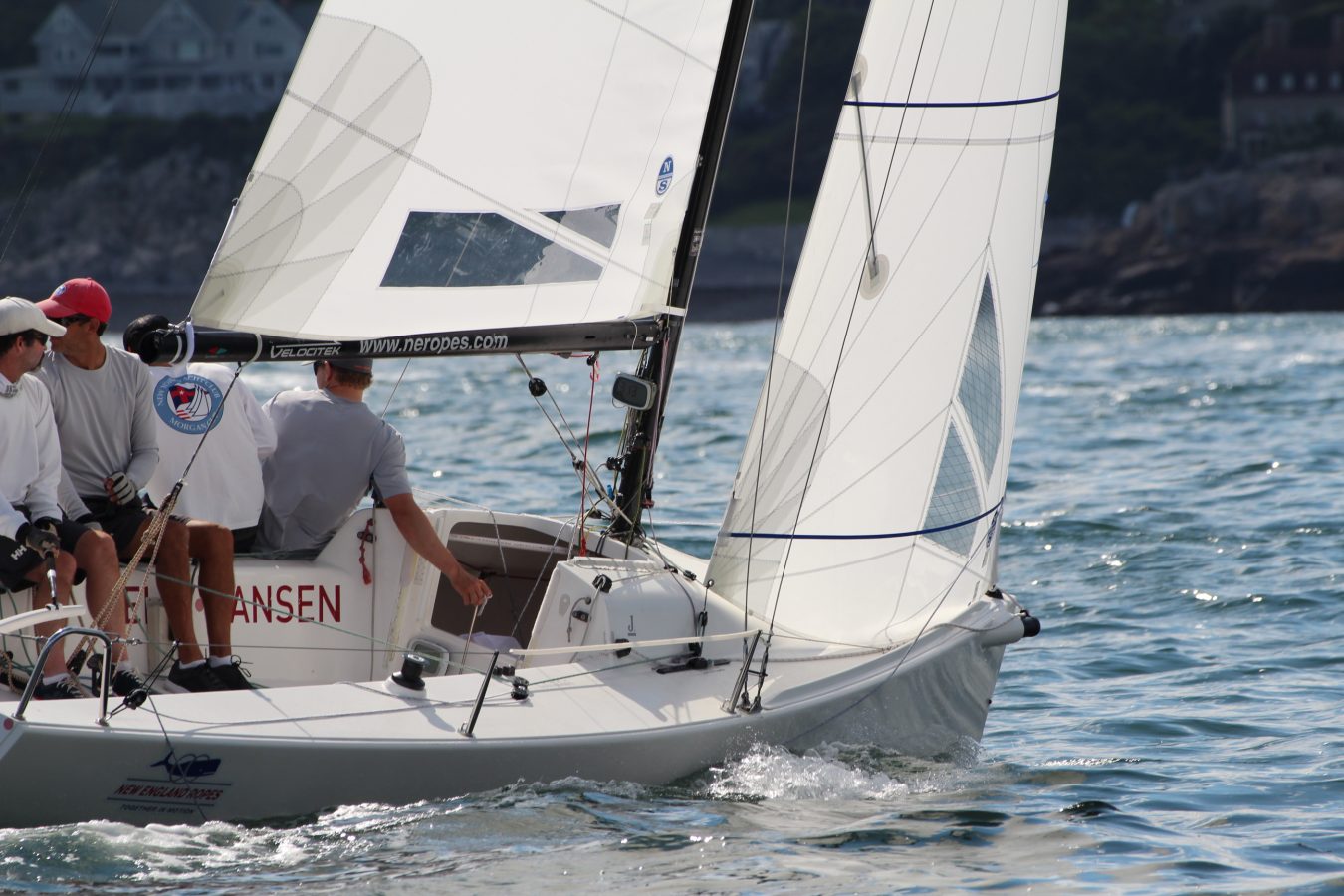
TIM HEALY WINS J/70 TED HOOD REGATTA IN MARBLEHEAD
NORTH-POWERED TEAMS DOMINATE J/70 TED HOOD REGATTA
XCS-2 & J-2 High Clew Combo Secure the Win in Marblehead
Forty-seven J/70s attended the Ted Hood Regatta held in Marblehead this past weekend in preparation for the upcoming World Championship end of September. Competitors saw three days of pleasant racing conditions allowing for a total of seven challenging races with winds ranging between 8-15 knots from the SE. All three days were very similar, with moderate to heavy chop, which comes as no surprise being a precursor as to what sailors will be expecting at the Worlds.
We caught up with North Sails expert Tim Healy to get his thoughts on his regatta winning inventory. Tim used the XCS-2 mainsail, J2-High Clew Jib, and the versatile AP-1 spinnaker, which he credited his power over chop, speed in light to medium conditions, and overall performance.
Upwind
“The hardest part about the upwind legs in each race was keeping the boat moving through the heavy chop typical to waters off of Marblehead. The J-2 High Clew jib keeps its power and depth with a twisted leech which proved fast and forgiving to trim in the difficult sea state. It is for sure my jib choice for the Worlds .”
Downwind
“Downwind was exceptionally tricky as all modes came into play. In many of the runs, we found ourselves winging, planing and in displacement mode multiple times. When planing mode was in play, there was a lot of ground that could be made up in one puff, which made things exiting! With that said, knowing when to switch gears downwind was key. Using the wing-on-wing tactically, knowing when to go bow-up to get on a plane, or stay in displacement mode were important decisions almost every run. The AP-1 spinnaker did it all and did it well! Once again the AP-1 proved itself as a great all-purpose kite and the best downwind choice for the Worlds.”
North-powered teams finished 1, 2, 3*, 4, 6, 7, 8, 9 and 1st* place in the Corinthian division.
“We had a very fun event. We decided to go with the J2-HC for the first time here at the THR. It worked well for us especially in the chop. Its powerful design helped a lot with acceleration out of our tacks and off the starting line. We also found it easy to trim. Based on our experience, given similar conditions, it will be the jib for us at the Worlds.”
Jim Cunningham, Lifted – 1st place Corinthian division
Need new sails for the Worlds? Order online or call your North expert today.
2018 TED HOOD REGATTA
J/70
1
New England Ropes / Tim Healy
2
Savasana / Brian Keane
3*
Mascalzone Latino / Umberto de Luca
4
Hydra / Martin Kullman
6
Rascal / Henry Brauer
7
Catapult / Joel Ronning
8
Rimette / John Brim
9
3 Ball JT / Jack Franco
* Denotes Partial North Sails Inventory
Full Results
Brian Keane’s Savasana, 2nd place with two race wins. Powered by North Sails.
Jack Franco’s 3 Ball JT – powered by North Sails.
READ MORE
READ MORE
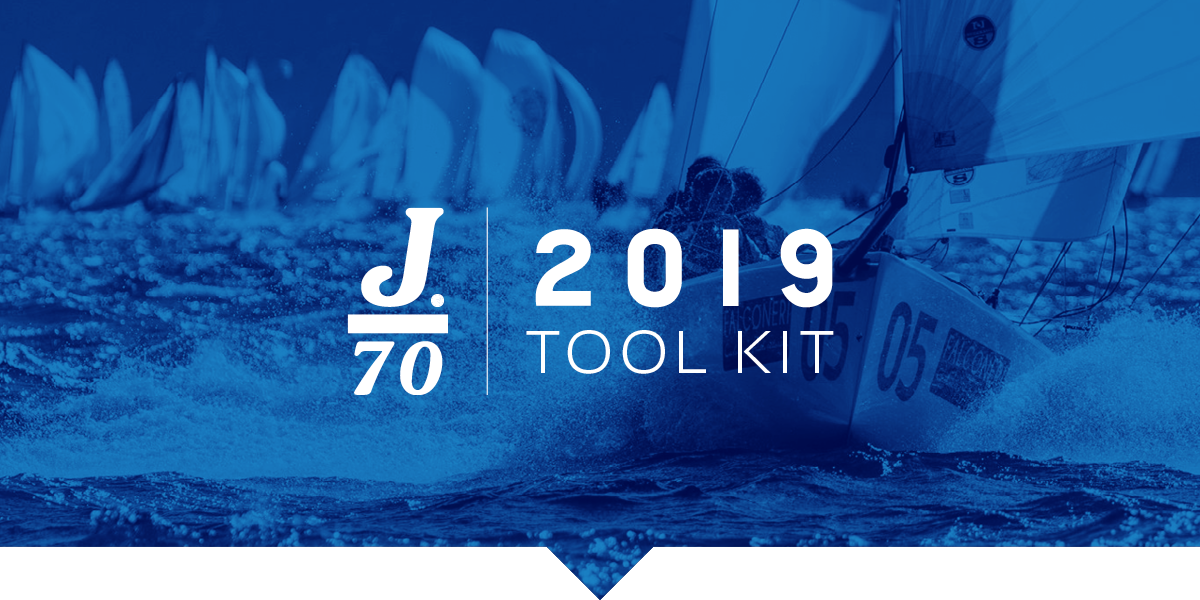
J/70 TOOL KIT : ALL YOU NEED FOR YOUR NEXT REGATTA
Get The Most From Your J/70 Racing Experience
The sailing season has already started. Is your team ready? Our tool kit will help you finish in front of the pack. Read our tips on boat speed, boat handling, crew techniques, and more. Created just for your by our team of experts.
Winners Choose North
There is no better performance test of a sail than the results it produces. In 2018 alone, North Sails J/70 inventories powered the winning teams at regattas all over the globe. Clients trust in our products to get the most out of their sailing experience.
Tim Healy’s Winning Inventory
No matter what the weather will bring, we’ve got options for any condition. Here is Tim Healy’s suggested inventory to help you get you started.
Light Air Tips
A week of intense training with the Japanese teams in Newport, RI taught Tim and his team a lot about light air tuning and trimming. Here are his tips, which include some important points to optimize your light air speed.
Fine Tune With North
Find your groove. Get your numbers. Be confident in all wind conditions. After countless hours sailing, testing, and competing in the J/70, our World Championship sails will get you up to race winning speed quickly. Reach your competitive goals with North.
Downwind Tips
Whether you are in displacement mode, wing-on-wing, or full plane, there are many ways to achieve better boat speed. Read more from Tim on how to enhance your performance downwind in all conditions.
Get Up To Speed
Pulling all the pieces together can be challenging. North Speed Guides will help you leverage our expertise to make the most of your one design sailing.
Our Road To 2018 Worlds
One design experts collaborated in a three-day clinic that combined the talent and intellect of the North team. Our commitment to excellence keeps us evolving designs within the J/70 product line.
Client Performance
An entertaining and educational interview with the 2018 Corinthian J/70 Midwinters Champions and 1st place Corinthian Marblehead NOOD team, Joint Custody.
Our Experts Make It Happen
Have questions? Contact your local J/70 expert today for more information on how choosing North can up your program.
READ MORE
READ MORE
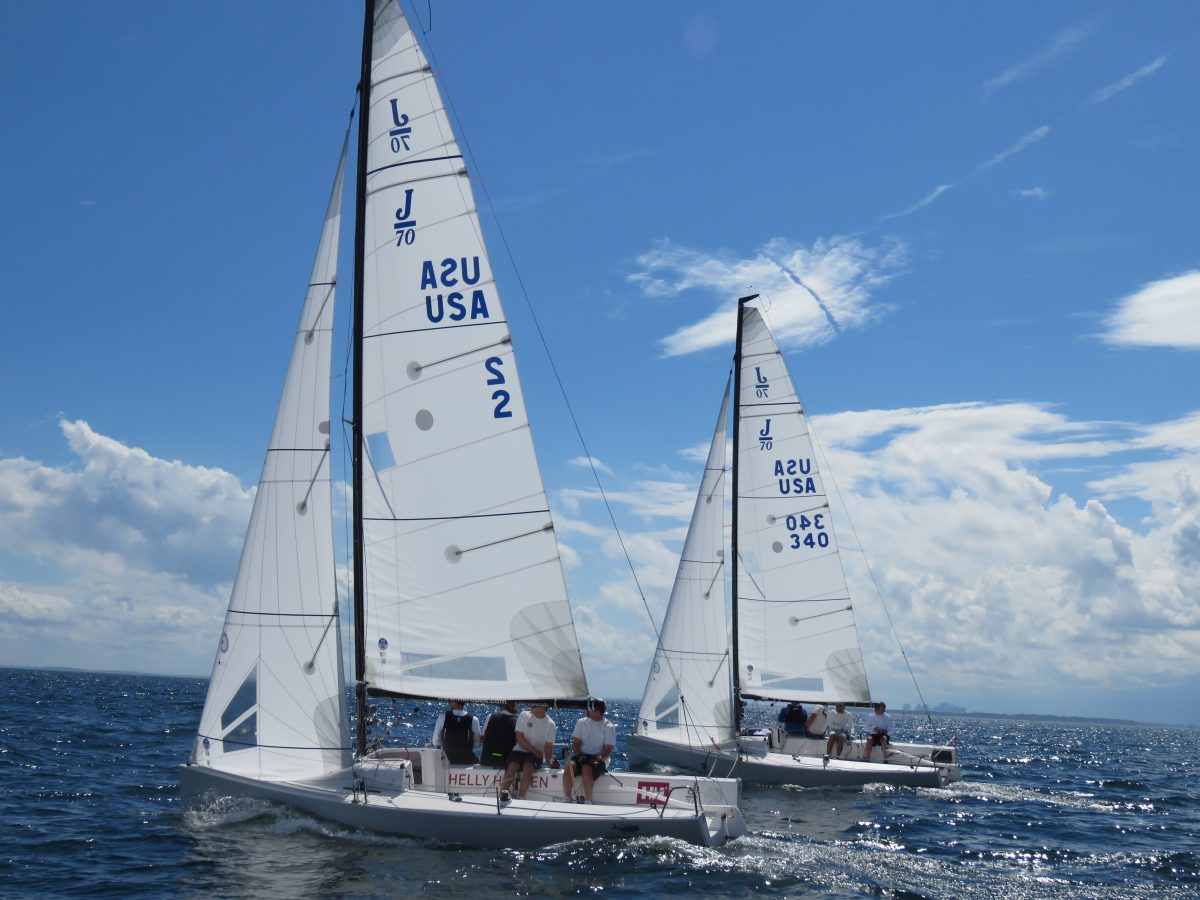
J/70 TAKEAWAYS FROM MARBLEHEAD
TIM HEALY’S TAKEAWAYS FROM MARBLEHEAD
Tim’s Suggested Inventory For The 2018 World Championship
Marblehead is an open-water venue that can often have flat water, swells and chop. My headsail of choice for this particular venue is North’s J-2 High Clew jib. It features a powerful shape for conditions seen in Marblehead, and has proven itself after winning four World Championships as a great option. The high clew allows for more efficient in-hauling over the cabin top and is easy to trim out of the box.
We used the J-2 for practice leading up to and during the NOOD regatta, and our trim settings became noticeably fast. By the end of the regatta we had excellent upwind speed in the lumpy sea-state. I recommend the J-2 High Clew jib as your best headsail option for the Worlds.
Our Race-Winning Settings: (6-10 knots)
Lead Positioning: 5.5 – 6 holes in front of car
In-Hauling: Clew positioned right at the cabin house
Sheet Tension: Use sheet tension to control the twist, keeping the upper leech telltale flowing 100% of the time.
We used the new XCS-2 Mainsail which features the same championship winning shape of the XCS-1 mainsail, with some minor updates.
The AP-1 Dynakote Asymmetric is also ideal for Marblehead’s choppy conditions. When we were in displacement mode (under 10 knots) we needed power and the ability to trim. The Dynakote material is more forgiving and absorbs the shock from the unforgiving sea-state making it easier to trim and easier to sail lower angles at a faster pace. These two sails paired with our tuning guide will make your Worlds experience easier and faster out of the box.
Contact Tim if you have any questions on how you can up the level of your program and get maximum performance this year at the World Championship.
We caught up with Ray and Jenn Wulff, who placed first in Corinthian division using Tim’s suggested inventory. Here is what they had to say about their experience using North Sails and how it impacted their weekend performance.
“As a corinthian team, we don’t have a lot of time to tune and practice before events. At the Marblehead NOOD, we pulled a set of North Sails out of the bag, having never seen them before. We followed the tuning guide provided, and had a fantastic regatta. The North Team put the time in to create a fantastic guide that makes it easy to go from the office to the race course with confidence. North’s J/70 sails are user friendly, forgiving, and easy to set up. Hard to beat that!”
-Ray & Jenn, Joint Custody
READ MORE
READ MORE
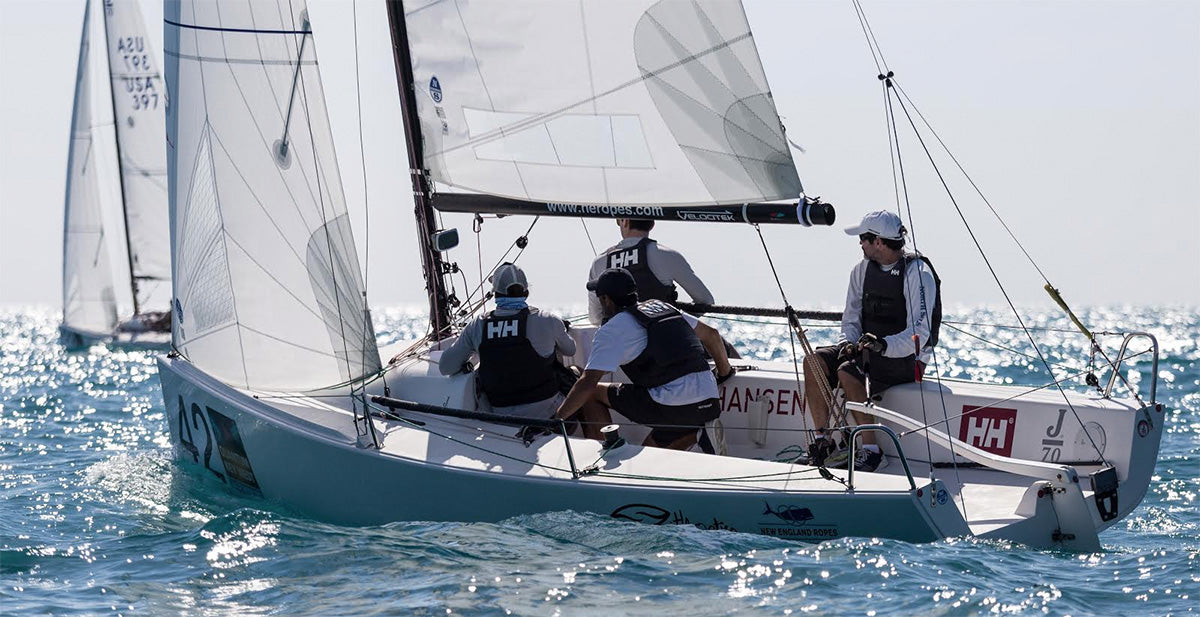
J/70 LIGHT AIR SPEED NOTES
J/70 LIGHT AIR SPEED NOTES
Tim Healy’s quick tips to optimize speed in light conditions
After a week of intense training with the Japanese teams in Newport, RI culminating with the New Your Yacht Club One Design Regatta, a lot was learned about light air tuning and trimming. Here are Tim Healy’s notes reinforcing some important points indispensable for optimizing the J/70 speed in light air conditions.
RIG TUNING
Ease rig to get about 3/4 inch of middle side sag in the mast. This is done by going off two full turns on the uppers and off two turns on lowers. If you are not getting 3/4 inch side sag, keep easing lowers until you do
In big chop, use a little backstay to control the rig from excess movement. Just enough to control the rig but not too much to take out all headstay sag
SAIL TRIM
In big chop and swell, keep speed up by twisting both sails thus making a large steering groove
Never stall the upper jib leech telltales. Trim until you see them stall then ease until 100% flowing
Jib leads 6-7 factory holes showing in front of jib car counting from behind front mounting bolt
Weather sheet trimmed to get clew at cabin house in flat spots, and 1.5- 2 inches off in big chop and waves. Remember to move lead forward with less windward sheet and back with more windward sheet
Ease jib halyard to show 8-10 inches of wrinkles in luff of jib in light and choppy conditions
Main traveler up to get boom on center when boat is up to speed out of tacks. Traveler at 75% up out of tacks for bow down acceleration
BOAT TRIM AND TURNS
Weight forward both up and downwind. Bow person in hatch up and down, out of hatch to help with roll tacking and jibing
Downwind: Tactician forward and to leeward and trimmer to weather. Both forward next to bulkhead
Upwind: Tactician forward next to bulkhead and trimmer as far forward as possible. Also, trimmer is first to control heel angle
Build speed first both up and down, then work on best VMG
Don’t let speed crash! It takes too long in light air to get going again
Make smooth turns and BIG rolls tacking and jibing
Keep momentum in focus when starting and at mark roundings
The three-day training camp coupled with the NYYC One Design Regatta, where teams had an opportunity to apply the new techniques and tips learned. We are extremely pleased with the each teams’ results. Here are the results within the top 10, powered by North Sails:
NYYC ONE DESIGN REGATTA
J/70
1
Team Vineyard Vines / John & Molly Baxter
2
USA 2 / Tim Healy
4
Rimette / John Brim
5
The Sled / Eiichiro Hamazaki
6
Natsuko / Yasutaka Funazawa
7
Sled / Takashi Okura
8
Polar / Doug Clark
9
It’s Sled / Hideyuki Miyagawa
10
Spring / Dave Franzel
* Denotes Partial North Sails Inventory
Full Results
Hiroo Kodama and Team Black practicing downwind techniques
Lots of learning in the three-day J/70 training camp with the Japanese teams
Short races at the North Sails training camp in Newport, RI
Tim Healy coordinates the Japanese J/70 Training Camp in Newport, RI
READ MORE
READ MORE
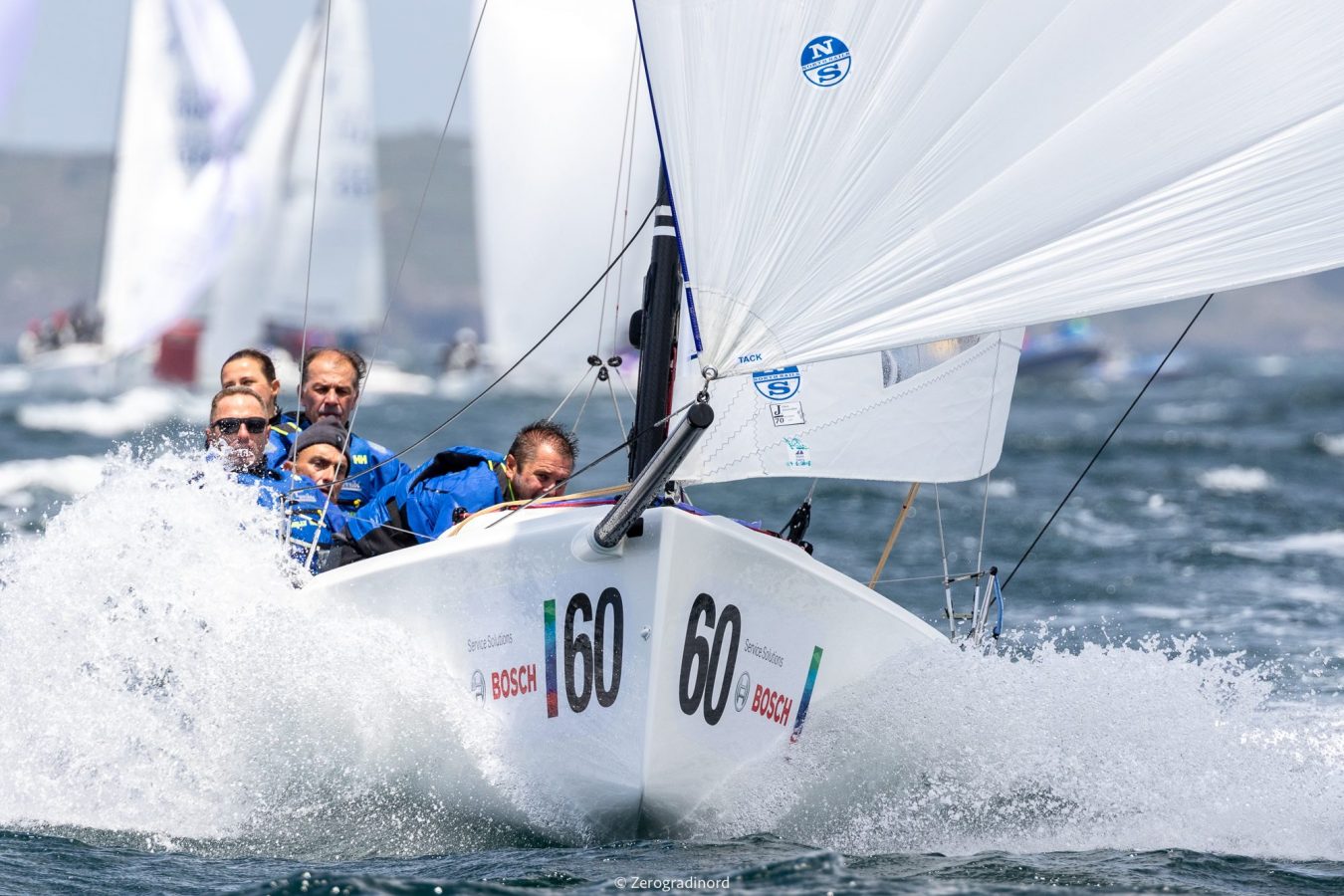
NORTH CLIENTS STORM J/70 EUROPEANS
NORTH CLIENTS STORM J/70 EUROPEANS
Alberto Rossi’s Enfant Terrible Continues Winning Streak in Vigo, Spain
Team Enfant Terrible, 2018 J/70 European champions. © Mauro Melandri | Zerogradinord
Sixty-nine boats met in Vigo, Spain for the 2018 J/70 European Championship. The heavy North-Westerly Atlantic winds came in full force, making for a beautiful week with exhilarating planing conditions. The title came down to the last leg of the final race. After receiving a black flag (DSQ) in race eight, Enfant Terrible was playing catch up towards the end of the regatta. Their win in the final race gave them a one point lead over second place Relative Obscurity, making Alberto Rossi and his team the new 2018 European Champions!
Rounding off the podium in first for corinthian division was Luis Arriola and his team onboard MarNatura. The local Vigo team put in a spectacular performance placing ahead of most the professional teams, showing true local spirit. What is extra special about this team is that the crew members are under 25 years of age, with 22-year old Luis on the helm proving that the J/70 is not just for professional sailors. Second place in the Corinthian division was Paolo Tomsic and team onboard La Femme Terrible, finishing in seventh place overall.
The fight at the top was not just between these three boats. A stand-out performance by Gustavo Doreste and his Spanish team onboard FERMAX who scored a hat trick mid-week, with three bullets in a row, matching the number of victories to the first and second placed boats.
North Sails has confirmed their abilities to overcome the odds and downright speed, thanks to five of the top 10 all powered by North. Congratulations to our clients on a job well done! Our clients placed 1,3,5,7, and 9 out of 69 boats.
Alberto Rossi and team Enfant Terrible used North Sails XCS-1 mainsail, J-2 jib and AP-1 spinnaker.
2018 J/70 EUROPEAN CHAMPIONSHIP
1
Enfant Terrible / Alberto Rossi
3
MarNatura / Luis Arriola (1st Corinthian)
5
FERMAX / Gustavo Doreste
7
La Femme Terrible / Paolo Tomsic
9
Ewa / Krzysztof Krempec
Full Results
Team MarNatura, 1st place Corinthian Division. © J70 Class Association | Chris Howell
© J70 Class Association | Chris Howell
Team Enfant Terrible going fast downwind. © J70 Class Association | Chris Howell
© J70 Class Association | Chris Howell
READ MORE
READ MORE
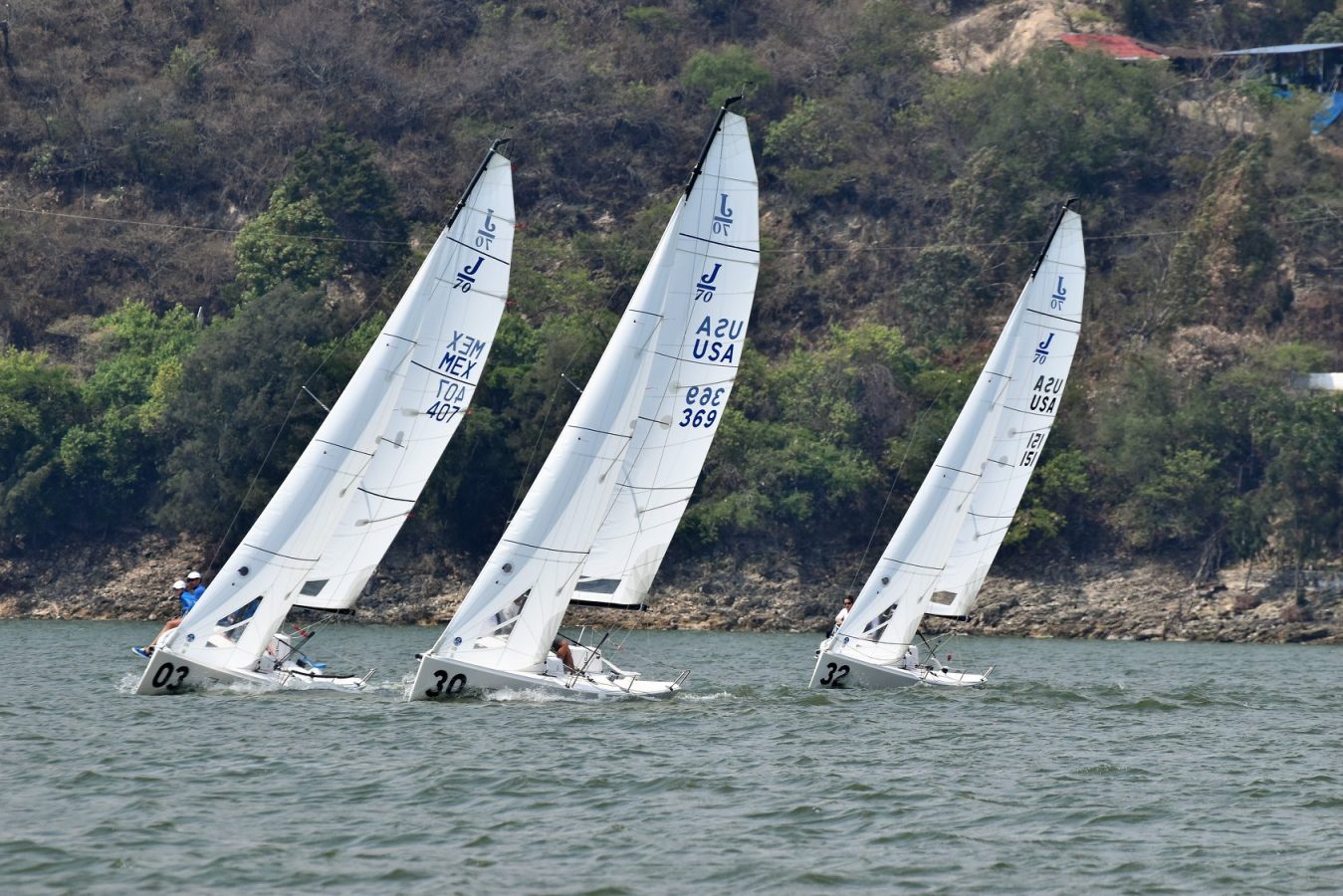
J/70 NORTH AMERICANS
2018 J70 NORTH AMERICANS
Challenging Conditions, Fantastic Times! North 1,2,3*,5!!!!!!
Sailing on a lake at nearly 6,000 feet of elevation in the middle of Mexico is not the normal kind of venue that comes to mind when racing a J/70 North American Championship. However, the location, the weather, the sailing, and the people in Valle de Bravo were all top notch.
Valle provided picturesque scenery with days reminiscent of the movie Ground Hog Day. In the mornings the temperature was cool and the wind was completely absent. As the day went on and the heat built, the thermal breeze would arrive like clockwork around noon, and the glassy lake would instantly be filled with a shifty and puffy 8-14 knot breeze. The breeze often arrived so quickly and seemingly out of nowhere that it could easily catch you off guard.
The pressure and angle variances in the wind across the course made the sailing quite interesting and even comical at times. It was not uncommon to see boats sailing upwind on opposite tacks with nearly the same heading, mearly boatlengths apart. This made my job as tactician tough, to say the least! Patience paid huge dividends and it was important to remember that sometimes when you might look the worst in a given moment, you could quickly go from zero to hero in the next shift, which was usually just moments away. It was also crucial to keep your head out of the boat, as there didn’t seem to be much rhyme or reason to the puffs and shifts. Being proactive with your crew weight and gear changes through the pressure changes were also key elements to the puzzle.
Downwind in the flat water provided excellent conditions for very fast wing-on-wing sailing. The trick here was to make sure you had enough pressure in the spinnaker to switch to the wing. Good communication from the spinnaker trimmer to the driver was essential and we also found that you want the boat to be going around 5.8 knots before deciding to wing.
Teams also experimented with transitioning to the wing by jibing the boom, but also by jibing the kite. In the past, most teams have primarily been jibing the boom, but if pulled off correctly, jibing the spinnaker seemed to work a little bit better as you don’t have to swing the mainsail through the air which can throw some turbulent air in the direction of the spinnaker at a time when it is the least stable.
Javier Navarro led his team on Bandoola (powered by North Sails jib and spinnaker) to a solid third place finish with Ander Belausteguigoitia (and I thought my last name was hard to pronounce!) on the helm and Javier Patron and Maria Jose Porter crewing. This team also shined in the Mexican Nationals just days before where they won the event with style even though the breeze was influenced by thunderstorms, causing it to switch 180 degrees, twice in each day.
Oivind Lorentzen, with Mike Buckley calling tactics along with Jeff Reynolds and George Peet crewing, took second place with all North Sails.
The J70 2018 North American Champions won the event going away and didn’t even need to sail the final race (quite the accomplishment given the tempermental wind conditions). Congratulations to Thom Bowen and his team Reach Around with Bill Hardesty calling tactics, Alec Anderson and Jacolyn Wetmore crewing. Reach Around was also powered by full North Sails inventory.
Enough good things can’t be said about the incredibly hospitable people in the Valle de Bravo sailing community that made the North Americans happen (and the Mexican Nationals just days before). Roberto “Pollo” Escalante, skippering his boat Lampuga, organized one heckuva regatta that provided some downright delicious meals each evening that included some fantastic tequila and Optimist dinghies filled with free beer every day after sailing. “Pollo” also treated the regatta to some of his live music playing abilities the last night of regatta that I may or may not have been a part of…
Erik Brockman, sailing on Vincitore with Ricardo Brockman skippering to a commendable 8th place finish, organized a remote control Laser racing tournament that was a blast for both the racers and the spectators (thanks again, Chip Till, for calling me over – twice!).
Special thanks go out to Sean and Tanya O’Keefe for setting us up with their J70 Mexigenics and also Kenneth Porter for hosting Chris Snow and myself at his house and for sailing with us along with Danny Banos on Mexigenics.
All in all, if you ever get the chance to sail a regatta in Valle de Bravo, jump on it! This place is definitely one to add to your bucket list. I know I personally can’t wait to get back down there.
2018 J/70 NORTH AMERICANS
1
USA 151 Reach Around / Thomas Bowen
2
USA 819 Nine / Oivind Lorentzen
3*
MEX 407 Bandoola / Ander Belausteguigoitia
5
USA 369 Mexigenics / Chris Snow
* Denotes Partial North Sails Inventory
Chris Snow, Jackson Bevenutti, Danny Banos and Kenneth Porter
READ MORE
READ MORE
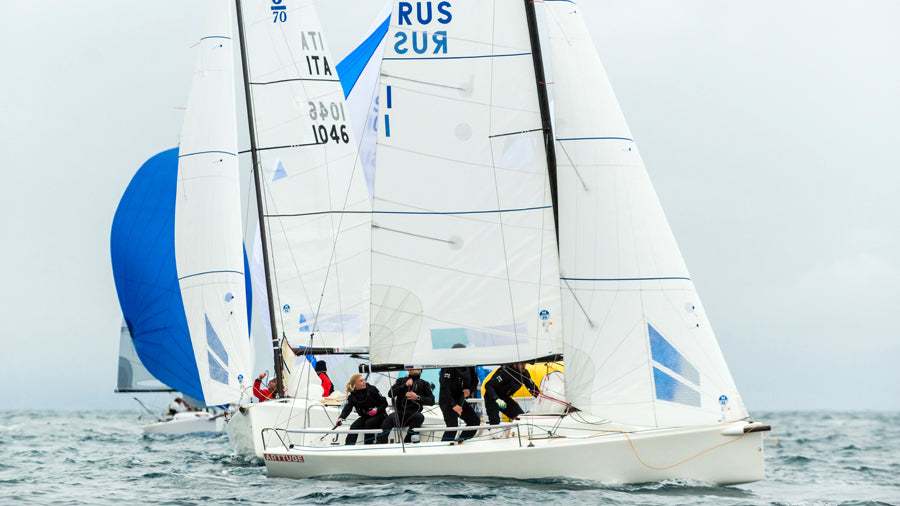
J/70 MONACO WINTER SERIES CHAMPION INTERVIEW
MONACO WINTER SERIES CHAMPION INTERVIEW
Lera Kovalenko and Team Art Tube – A Great Start To a New Hobby
For some of us, sailing is something that we learn at a young age with parents and relatives, or we catch the bug for racing in our early teens. For others, the fantastic sport is gifted to us later in life. Lera Kovalenko, female Russian J/70 sailor first started sailing just 3 years ago, and since has been taking the European J/70 fleet by storm, with her team onboard Art Tube. The team took the lead in the Monaco Sports Boat series from the very first event and maintained their winning streak through the end of the series. Art Tube dominated the overall standings across the board, with an outstanding and impressive run on the scoreboard after claiming 15 bullets across the three event series!
We spoke to Lera after the regatta to get the full scoop on how she got started racing sailboats and what contributed to her amazing success this year at the Monaco Sportsboat Winter Series.
How long have you been sailing for and what got you into sailing?
I started sailing 3 years ago and have been sailing with my team for the past 2 years ago when we started racing as Art Tube team.
What has been the key to your successes so far?
My team is the main key success factor. It’s a great fortune for me to race with professionals who have a pool of experience, high self-discipline, high demand on me and on each other and being results oriented.
What has been your favourite event this season?
I really enjoyed the Italian J/70 series, but I also liked racing in England and I would like to return there again.
Why did you choose to go with North Sails?
We chose to use North Sails because all the leaders in the class race with North and we are definitely pleased with the choice!
What’s your most helpful tip for new sailors hoping to climb to the top?
Make sure you train at every opportunity!
Giulio Desiderato, North Sails J/70 expert commented on Lera’s performance over the winter season:
“I met Lera two winters ago in Monaco, sailing with the J/70 and from the beginning the feeling was that she was really determined to improve day by day and regatta by regatta. During the last Winter Series in Monaco I heard that she’s started sailing just three years ago. I was really surprised, Art Tube won all the event sailed this winter in Monaco! I asked her what is the key of all this victories and I had the clear perception that the team work the method and determination to training hard are the keys to achieve good results. I wish to Lera and all her team the best!”
Art Tube is powered by a full North Sails inventory consisting of the XCS-1 Mainsail, J-6 Jib and AP-1 Spinnaker. If you are interested in any North Sails J/70 products visit the class page to find your local class expert.
READ MORE
READ MORE
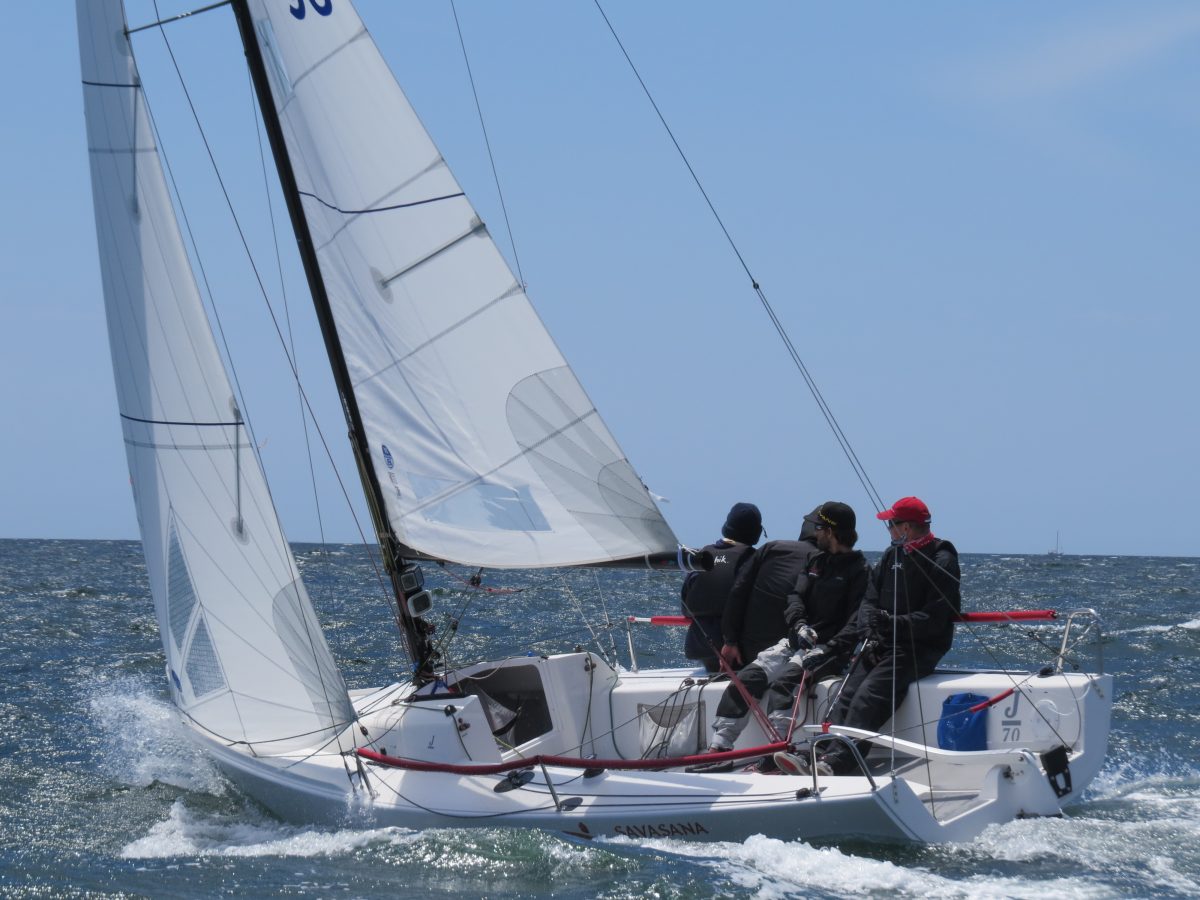
HOW TO TRIM THE J/70 JIB FOR MAX SPEED
J/70 JIB TRIMMING FOR SPEED
Jib Lead and In-hauling Settings for the J-6 Jib
Trimming the jib on the J/70 involves both technique and accuracy. Proper jib trim will help balance the boat and help in boat speed and pointing ability. While achieving the proper trim is the goal, being able to repeat the trim consistently will also make a big impact on your boat’s performance. The important factors in proper jib trim are the lead car position, jib sheet tension, in-hauler tension, jib halyard tension and reference marks to repeat all the settings. The final trim position for the J/70 jib is a balance between the sheet tension and in-hauler tension.
When the jib is trimmed in, the leech of the jib should be lined up with the spreader stripes (between 18”-22” from the side of the mast). Within this range, your upper jib leech telltale should be flowing 90-100% of the time. Trim in until it just stalls then ease a hair until it starts flowing again. This is your max trim.
Jib Car Position
The first step in jib trim on the J/70 is jib lead car position. Setting this position is important as it affects all of the other settings. Combining the jib lead car position with the amount of sheet tension, in-hauler and halyard tension allows the trimmer to manipulate the sail to fit the conditions and style of the skipper. When discussing the position of the jib lead car, we reference the number of holes visible behind the first deck mounting screw in front of the car once in a position.
Windward Sheet
On the J/70, we use the windward, or lazy jib sheet as an ‘in-hauler’ to pull the clew of the jib to windward and more inboard. When setting the in-hauler tension, our reference point is the distance the clew of the jib is away from the side of the cabin house.
J-6 Jib: For the J-6 some in-hauler is always required. In very choppy conditions, use less in-hauler with the clew at 2”-3” from the cabin house and the lead at 5-6 holes showing. In light to moderate chop the clew can be at or just inside the cabin house with the lead at 6 -7 holes showing. In very flat water the lead can go back more to 7-8 holes showing.
J-2 Jib: Our go to setting for the J-2 is 2” from the cabin house. In Flat water we may go to 1” away and in moderate chop conditions 2.5-3.5”. In big waves and chop we may go with no in-hauler. Remember that the less in-haul is used, the farther forward the jib car needs to be.
For the J-2 jib with no in hauler, the car should be around 3-4 holes showing and with a lot of in-hauler on and the jib clew is at 1” from the cabin house, there should be 5-6 holes showing in front.
Jib Halyard
The jib halyard on the J/70 is rigged with a fine tune purchase that can be adjusted while sailing. In lighter winds, the jib halyard should be set so that there are slight wrinkles appearing in the first panel along the luff of the sail (approx. 4-8” back from luff of sail). If wrinkles extend further back in the sail, or no wrinkles appear at all, the halyard should be adjusted to compensate. As the wind gets stronger, and the sails need to be de-powered, the jib halyard should be tightened just to the point where the wrinkles along the luff disappear. As the halyard is tightened and loosened, it is important to keep in mind that the halyard tension also affects the leech tension of the jib and the sheet and/ or in-hauler may need to be adjusted to compensate.
Make Marks
Make reference marks on jib sheets for both the sheet tension and in-hauler tension. Having reference marks will make it much easier to duplicate your trim settings quickly. Jib sheet and deck reference marks help accurately repeat trim settings It is a good idea to experiment with different settings for each control to get used to how each control affects the sail and how they interact with each other
The basic effect of the three jib controls, lead car position, in-hauler and jib halyard is:
Jib Lead Car Position
Forward = Tighter leech, round foot
Aft = Open leech, flat foot
In-hauler
More = Tighter leech, round foot
Less = Open leech, flat foot
Jib Halyard
More = Flatter sail
Less = Deeper sail
** Counting the number of open holes in front of the jib lead car and after the first bolt identifies jib lead position.
*** The distance (in inches) from the clew of the jib to the side of the cabin identifies in-haul measurement. Use less In-Haul when lead is forward and more in-haul when lead is aft.
After setting the sheeting position of the jib, the trimmer needs to constantly check to ensure the trim remains correct as the conditions change. Since the jib on the J/70 is high aspect (tall and thin) changes in the conditions have a significant impact on the trim of the sail. For this reason, there are telltales attached to the upper leech of the jib to help the trimmer know when the sail is going to stall. When the sail is trimmed properly for upwind, the leech telltales will be flowing and if the telltales begin to stall, the sail will need to be adjusted to regain the flow. Most often, only a small adjustment is needed to help return the proper trim and flow to the sail. The reference marks on your spreaders will also help with jib trim. You will find that in 10+knots in flat water you may be able to sheet so the jib leech is at the inside, 18” spreader mark and the leech telltale is still flowing. When it is light and lumpy you will find that the leech will need to be closer to the outside 22” spreader mark. Easing the jib sheet slightly is the first step in returning flow to the jib. Normally, this will only require an inch (or less) of sheet to be eased out. If the leech telltales continue to stall when the leech is sheeted in to the spreader stripes, other adjustments need to be made to properly trim the sail. Since the telltales indicate the stalling of the upper leech of the sail, adding twist is likely the solution. The two ways to best achieve more twist in the jib, is to move the lead car aft and use less sheet tension. As described earlier, both adjustment will add twist to the sail and help regain the twist and flow at the top of the sail.
Other J/70 Speed Resources:
J/70 Speed Guide
J/70 Full Tuning Guide
J/70 XCS-1/J-6 Quick Tuning Chart
READ MORE
READ MORE
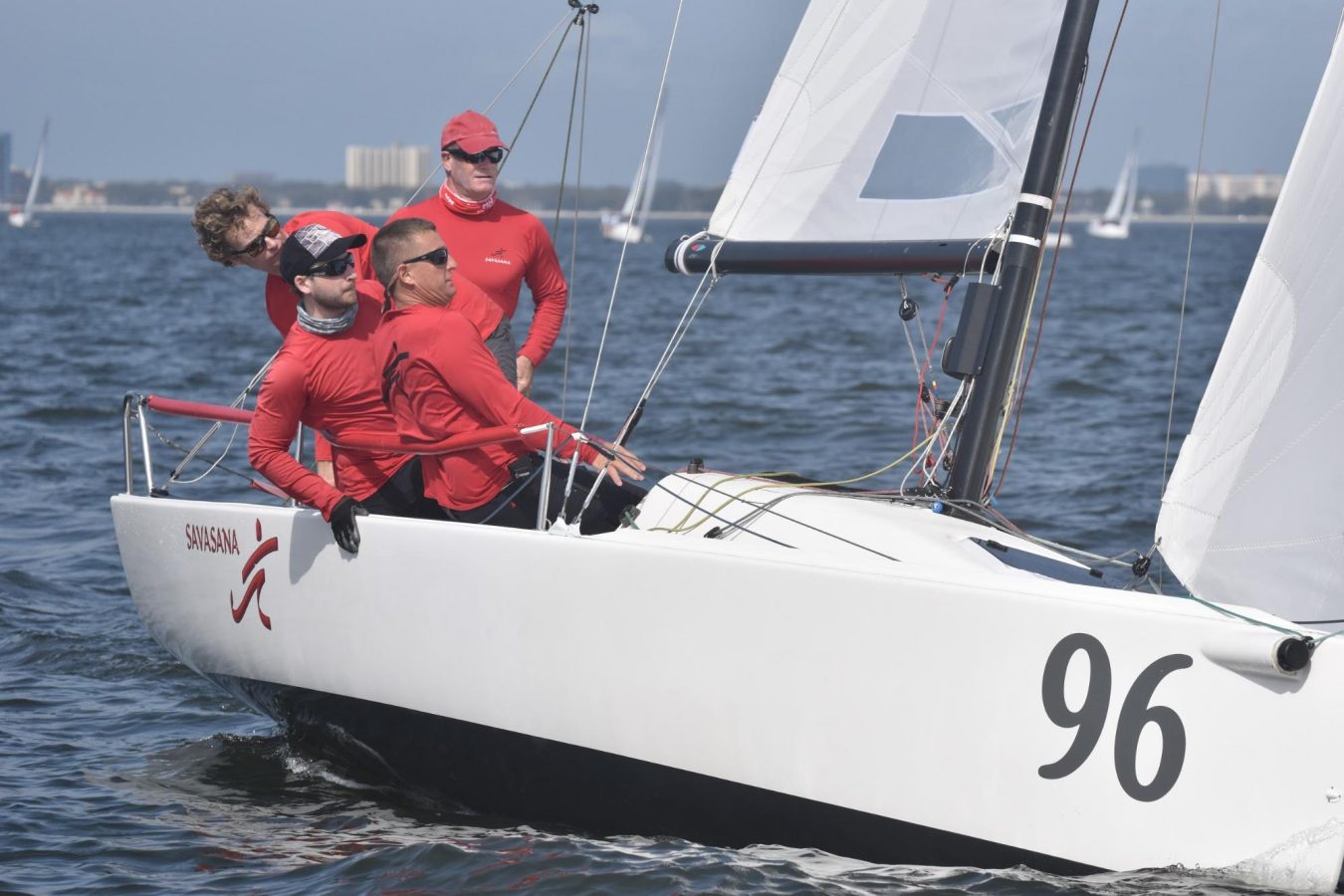
INTERVIEW WITH BRIAN KEANE, J/70 US WINTER SERIES CHAMPION
INTERVIEW WITH BRIAN KEANE, J/70 U.S. WINTER SERIES CHAMPION
North clients continue to succeed given the right tools for success
Team Savasana, US Winter Series champions powered by North Sails.
North Sails products are designed to be a tool for our clients to help them excel on the race course. North Sails has developed fast, user-friendly sails that give teams like Brian Keane’s a competitive advantage.
We caught with Brian after his race series win in Davis Island, FL where he sailed his way to success through a high level of competition in the US J/70 class. Each regatta result finish his team had totaled 7 points in the three-event series, and given one throw out he was left with only 4 points. Here’s what Brian had to say about his team, how they prepared for the winter series, and how they maintained consistency through three regattas, giving his team the overall series win.
NS: The entire series had all types of conditions. It was windy at the first event, shifty in the second, light air in the third. How did your team adjust to keep such great consistent results?
“We were pretty happy that we had a variety of conditions because it gave us a chance to test our tuning and boat handling across a wide spectrum. I think we felt pretty fast in all conditions, whether it was windy or whether it was light. I think the key thing is being smart and avoiding the costly errors. At the end of the day, we felt as fast as anybody, but the real key is not shooting yourself in the foot by making any major mistakes.”
NS: What are some things of most importance that you focus on going into each event given that you might have maybe a different crew every time?
“Yeah, we had slightly different teams, even in each of the three events. When you do that, it just reinforces the importance of being able to communicate effectively within the team, so if somebody’s out and somebody new is in, they can get up to speed very quickly.”
“Because we had a different trimmer in each of the three events, we made sure that we got there early >to practice. We spent about a day and a half practicing. And part of that practice is working on boat handling and our settings for different conditions, so everybody knows who’s doing what. The other part of that practice is then to make sure, from a speed standpoint, we are where we need to be.
As far as the actual racing is concerned, our goal was to get off the line in a clear lane. We had enough confidence in our speed that if we could get off the line sometime in the lower-density area and be able to hold for a few minutes that we’ll quickly be near the top of the fleet and we can just grind down from there.”
“Starts and minimizing risk I think are some of the key themes across all three events.”
North-powered boats finished 1,3,4*,5*,6,7 at the 2017-18 US Winter Series.
NS: Out of all three events, was there a race highlight, or a moment that stuck out that you remember?
“In event two on the windiest downwind leg- it was blowing like stink. We just killed it and extended dramatically on the entire fleet. That’s always fun. We won the race and won it by a lot. It was exhilarating. You know, I think back on it … I haven’t looked at all of our finishes, but I think one of the things I feel good about and was how consistent we were going into each event. I am not sure if we ever had a race out of the top ten, and that’s a sign that you’ve got speed and you’re not shooting yourself in the foot. You’re just always there and relentless.”
“That’s the kind of stuff that wins regattas, and wins a race series- it’s being consistent.”
NS: What advice would you give a new J/70 team?
“We sometimes call it “sail by the numbers.” We have a lot of data and we know exactly how we wanna set up for every condition. We’re not wasting time wondering what the right setup for the rig or for sail trim is as the conditions change. As the conditions change, we can look at our grid and we know what to do.
That takes a lot of the complexity out of it. So a new team should ask some of the other teams what they should be focusing on. “How do you think about rig setups, sail trim in different conditions?” Try and create your own map, your own grid, so you can sail by the numbers, so you can think about sailing and what you’re doing during the race, as opposed to trying to figure out how to make your boat go fast.”
NS: What were the biggest contributions to your team’s success this weekend?
“Smart decisions, tactics, strategy, where to start, and where to go.”
2017-18 U.S. J/70 Winter Series
Teams Powered by North Sails
Event 1
1, 3, 5, 6, 7, 8*, 9, 10 / Congratulations Brian Keane
Event 2
1, 3, 5*, 6, 7, 8*, 10 / Congratulations Joel Ronning
Event 3
1, 3, 4, 5, 6, 7, 8, 9, 10, 11, 12 / Congratulations Jack Franco
Series Overall
1, 3, 4*, 5*, 6, 7 / Congratulations Brian Keane and team Savasana!
* Denotes Partial North Sails Inventory
Max Nickbarg, Thomas Barrows, Brian Keane and Ron Weed.
READ MORE
READ MORE
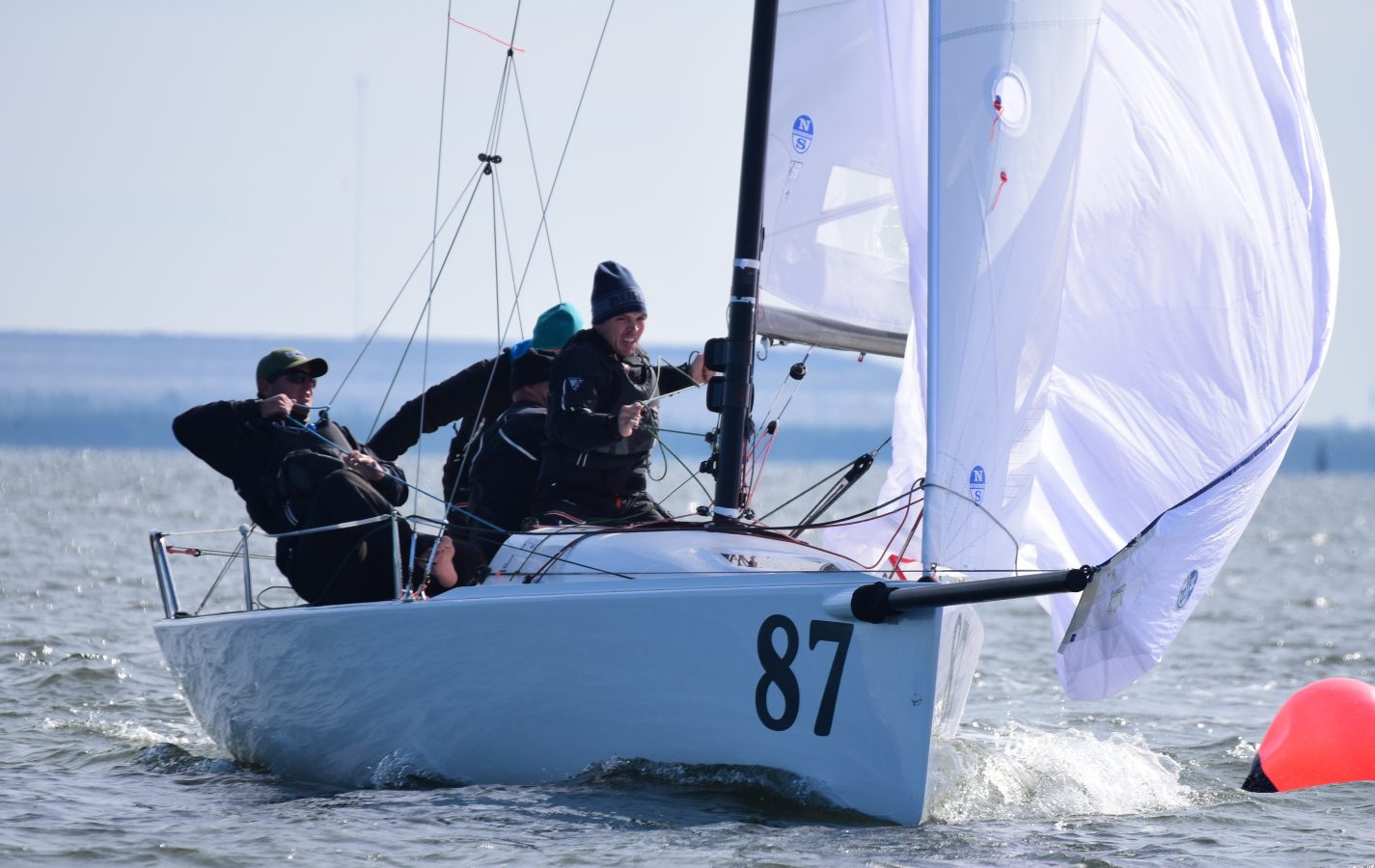
J/70 DOWNWIND TIPS - MARGINAL PLANING CONDITIONS
J/70 WINTER SERIES EVENT #2
Tips for Marginal Planing Conditions
Joel Ronning’s team Catapult, winner of the US Winter Series event #2. Photo Chris Howell
The J/70 Class came back for the action at event #2 of the Davis Island Winter Series in Tampa, Florida. Starting the event off with a bullet, Joel Ronning’s Catapult was ready to take on the 52-boat fleet. A cold front kept things on the chilly side, but with a nice 12-18 knot breeze out of the NE and flat seas, ideal conditions for all teams would be presented for the weekend. The competition was as high as usual. Sailors were eager to get off the line in a clear lane so they could choose their own destiny. After six races, Catapult lived up to their name and stayed clear of the fleet, scoring a total of nine points after one discard. Still having no races out of the top five the entire weekend, they were untouchable and had unbelievable speed. The XCS-1 mainsail, the J-6 jib and AP-1 spinnaker was a common weapon of choice for J/70 teams this weekend, with outstanding results.
North powered clients to 1,3, 5*, 6,7,8*,9 overall, sweeping the fleet full storm. Congratulations to our clients for these outstanding performances throughout the weekend in shifty-puffy conditions.
As always, teams had their share of tricks to get them around the race course. North Sails Tim Healy joined John Heaton’s team Empeiria for the weekend and shared some tips with us afterward. Here is what he had to say about maximizing crew technique in flat water marginal planing conditions.
Tips for Marginal Planing Conditions in 14-16 knots, flat water
At the top of the beat it is important to recognize what side of the course has best pressure.
Plan A: If no jibe is the call, then complete a normal set and quickly determine if you are in a planing puff or not, keeping in mind that you still have to protect your lane to weather.
Plan B: If you decide on a quick jibe, set up on the offset leg so you won’t get overlapped to windward with any boat. It is also important to sail higher, early in the offset leg, so the spinnaker can be set before the offset mark and fill as early as possible. This will allow a jibe at the offset mark to ensure no one will jibe inside you.
If you are in a planing puff, leave the jib out. Once you get planing get more vang on to maximize your power by keeping the main leech from spilling open. You should notice your leech telltales starting to stall then ease off a bit. This will give more power once you are up on a plane, allow you to sail lower while planing and will keep you planing longer as the wind fades off.
Things to keep in mind on crew weight placement:
In marginal or ”lazy” planing conditions, keep crew weight forward. The three forward crew should only move fore and aft in the cockpit section in front of the winch. Helmsman should be hip up to winch to-two feet behind it. The less wind the farther forward the entire crew needs to move.
As your planing puff dies, turn up gradually to maintain power and heel angle. If puff continues to die and you need to start searching up for pressure/power, look upwind and determine if there is another puff coming quickly that you can connect with. If a puff is not coming your way, then quickly go into displacement mode.
Furl jib
Bear away to max downwind angle
Ease main out and adjust vang for proper twist
Weight in for a flat boat and weight max forward
Make sure your backstay is fully eased
When your are in displacement mode, it might be a good time to think about going wing-on-wing. This will allow you to ride the 8-13 knot puff back down to the center of the course and away from the pack. It works well in these marginal planing conditions because it allows you to separate from other boats that may be searching too high to stay on a plane. You will be sailing close to DDW, while they are sailing high (on a reach) searching for the next planing puff. This is an opportunity to gain a lot of distance from your closest competitors.
Once the next puff is identified as a ‘planing puff’, wait until it hits then it’s time to take immediate action:
Unfurl jib (under trim till planing to keep it from disturbing the air flow around spinnaker).
Turn boat up to get planing at the same time all the crew weight is moved to the weather rail.
Find the correct heading based on heel angle. No more than 12 degrees of heel when puff hits then less than 10 degrees to get planing. Keep in mind that a planing boat should be flat and have no more than 10 degrees of heel.
Spin can be eased to see curl when puff first hits. When planing trim in to eliminate that curl. Only test curl from time to time. This keeps the spin leech from twisting too far open and depowering.
Once planing, trim vang on and trim in the jib, being careful not to overtrim.
See you at the next regatta! Please do not hesitate to contact Tim or the North Sails J/70 experts with go fast questions or product information.
J/70 2017-18 US Winter Series – Event 2
1
Catapult / Joel Ronning
3
Savasana / Brian Keane
5*
Powerplay Racing / Peter Cunningham
6
Stampede / Bruno Pasquinelli
7
Scamp / Will Welles
8*
Minor Threat / Jeff Janov
10
Building A / Josh Goldman
* Denotes Partial North Sails Inventory
Full Results
Sail22 Porch Series with North U – J/70 experts Tim Healy, Eric Doyle and Jackson Benvenutti
READ MORE
READ MORE
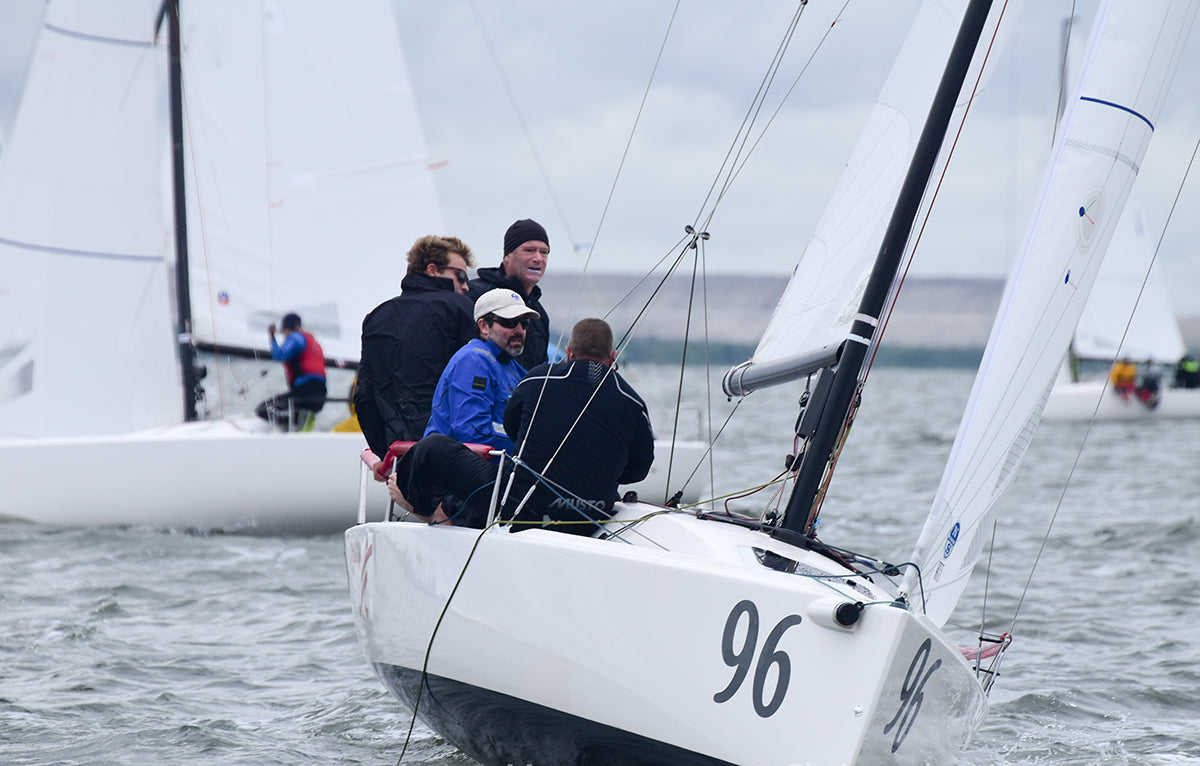
J/70 US WINTER SERIES OPENER: BIG BREEZE TIPS
J/70 US WINTER SERIES OPENER
Key Tuning and Trimming Points from Savasana’s Trimmer Tim Healy
Event one of the J/70 Winter Series at Davis Island was a great success for North Sails clients. With an approaching frontal system, teams were psyched to sail in big breeze that was forecasted. Seven races were completed in the highly competitive 53-boat fleet. It was tight racing throughout of the fleet but Brian Keane’s Savasana deemed to be the fastest of them all, taking first place with a 22-point lead from the rest of the pack. Two bullets and only one race out of the top five was an impressive way to end the regatta.
We caught up with Savasana’s trimmer, Tim Healy, to see what he had to say about tuning and trimming points that helped them win the regatta. Tim provided the team’s top three tips that kept their boat sailing fast.
Congratulations to our clients on starting the series off with a bang, sailing very well with outstanding results in some unpredictable frontal conditions. The North XCS-1 main, J-6 jib and AP-1 spinnaker were the most popular sails in the top 10. Boats powered by North finished 1,3,5,6,7,8*,9,10 and won 6 out the 7 races.
Tim’s Top Tips for sailing in big breeze:
Get the rig tune tight enough.
We ended up at 28 on the uppers and 30 on the lowers. This allowed us to use a lot of backstay before we would get inversion wrinkles in the main. A lot of backstay tension, with a tight rig, translates into a tight headstay. A tight headstay keeps the jib from getting too deep which can overpower easily and drag the bow down in the puffs making the boat hard to control.
If the rig is not tight enough, the mast will bend too easily when the backstay is applied resulting in inversion wrinkles in the main too early and the headstay never getting tight enough.
Move jib leads back 1-2 holes and play/ease weather sheet in puffs.
Moving the leads aft make the bottom of the jib flatter and the top twist off easier. When the top of the jib can twist in the big puffs, it dumps some of the excess power and allows the boat to be sailed flatter. The weather sheet should also be eased in the big puffs to open the slot, flattening the bottom of the jib more and adding more twist to the upper leech. In these big puffs it proved to be very fast, as the skipper would feather slightly in the sharp increase of pressure. If the jib had too much weather sheet or if the lead was too far forward, the boat would heel over too much. The main would need to be eased/luffed and the bow would be dragged down because the balance of the boat is thrown off. When the puff is over, the weather sheet can be pulled back on adding upper leech tension as well as depth to the bottom of the sail. Playing the weather sheet can all be done from the crew hiking on the weather rail without much movement. A steady crew that is sitting still and hiking is important for the mainsheet trimmer and helmsman to get in sync to balance out the helm and trim.
Downwind – Leave backstay on if in overpowering windy conditions.
This will not only keep the main flatter, but it will pull the luff of the spinnaker tighter as well. A tighter luff will flatten the overall shape of the spinnaker by moving the draft forward, making the leech of the spinnaker twist. Easing the traveler down all the way will make pumping more effective, and give the main trimmer more control of the main leech. When the traveler is all the way to leeward and the trimmer pumps the main, the boom not only comes in to weather but it also is being trimmed more effectively down. This acts like pulling the mainsheet and vang on at the same time. When the big puff hits, a quick ease of the main will open up the leech allowing the boat to stay under control and ripping with very little vang tension.
Need to step up your game? Contact your local North Sails expert today for the latest products to get you up to speed for the winter sailing circuit.
J/70 2017-18 US Winter Series – Event 1
1
Savasana / Brian Keane
3
Stampede / Bruno Pasquinelli
5
NINE / Oivind Lorentzen
6
Tea Dance Snake / Todd Jenner
7
Scamp / Will Welles
8*
Flojito 3 JT / Jack Franco
9
Rimmette / John Brim
10
Polar / Doug Clark
* Denotes Partial North Sails Inventory
Full Results
READ MORE
READ MORE
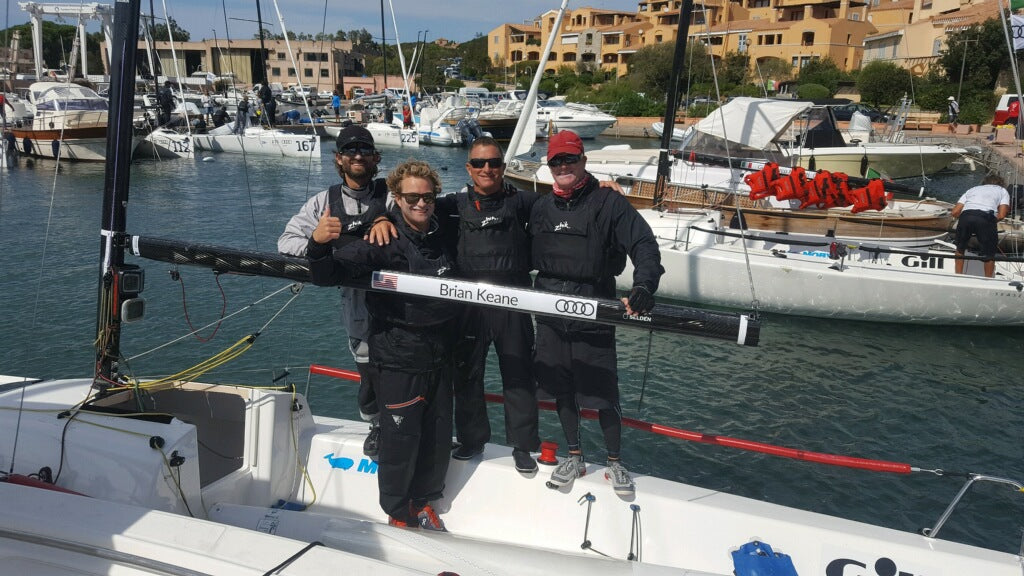
J/70 WORLDS: INTERVIEW WITH BRIAN KEANE
BRIAN KEANE, J/70 WORLDS RUNNER UP
Sail development, team consistency and practice-practice-practice – The keys to Team Savasana’s success
Brian, congratulations from all of us here at North Sails One Design on your second place finish at the just completed J/70 Worlds in Sardinia! You have been sailing the boat pretty much when it started. What is the appeal of the J/70 to you?
Brian – Many thanks for the kind words. We worked hard for this event and we are pleased with our performance and result. Porto Cervo is a beautiful place to sail, and we enjoyed conditions ranging from raging mistral to relatively moderate breezes.
As for the J/70, I have been in the class from the beginning. In fact, I have been a long-time J Boat owner having previously raced both a J/105 and a J/80. I love the J/70 and believe it may be the most exciting and competitive keelboat class anywhere in the world. Throughout the year, it is possible to attend numerous events with 30, 50 or even 70 boats competing. The biggest events, like the Worlds, can have more than 160 boats representing 24 countries. And the depth of the class is incredible, with dozens and dozens of boats having teams comprised of world champions, Olympians, and America’s Cup competitors.
“If you love one-design sailing and you like to compete against the best in big fleets, then the J/70 class is the place to be.”
Second overall in a 160+ boat fleet, the biggest one design championship we have had in decades, maybe ever, is not small feat. Can you tell us what you did to prepare for this big event?
Brian – Preparing for an event like this takes time and careful planning. After last year’s Worlds in San Francisco where we placed 8th, we got together as a team and discussed our goals for 2017. Obviously those goals were primarily focused on the World Championships in Porto Cervo, Italy. ,
As the year progressed, we knew that we were making advancements on multiple fronts. It sounds trite, but one of the most important things we did was make sure that we participate in enough events and had enough practice days as a team so we could build on our knowledge base week to week.
“Another important area of progress was in sail development, particularly as the class started moving towards more aggressive use of weather sheeting. We were pleased to work with North Sails and shared our thoughts about improvement opportunities.”
Sailing with North Sails, can you tell us what models you used and give us some insights on how you set your boat up? Watching the regatta it appeared to be a pretty windy week.
Brian – In terms of sails, we went with the latest and greatest from North. This includes the XCS-1 main, which we believe is very versatile across a variety of conditions. In the breezy conditions, we had the ability to make the main very flat, and when necessary in lighter conditions, we had the ability to add depth and power to adapt to the conditions.
“For the jib, we went with the new North J-6, which we really like a lot. It has a high clew which makes it very easy and efficient to weather sheet into the cabin top when the conditions are right. This allows us to maintain equal speed with competition while often providing us a height advantage. This is especially important in getting off the line and maintaining a lane in big fleets.”
For the spinnaker, we used the same North AP-1 spinnaker design that we have loved for the past few years.
Starting with that many top boats is a real challenge. Any pointers for the rest of us on how to get consistently good starts in such and large and competitive fleet.
Brian – The race committee at the Worlds did a terrific job in some challenging conditions. Generally, the lines were square and the first windward leg was pretty long, generally 1.4 or 1.5 miles. The race committee also located the course far enough away from geographic factors so it wasn’t a race to the left side of the course. The combination of these factors, plus our confidence in our speed, meant that we didn’t need to win any start. Instead, our focus was to start in lower density areas and try to hold our lane for at least 3-4 minutes. If we could do that, we figured we would already be in the top 25 percent of the fleet. And racing near the top of the fleet is way easier than being buried.
We also recognize that in big fleets random bad stuff can happen to anybody at the start. When this inevitably happens, it is important to be timely, yet smart about when to clear out so you can find a new lane. Hanging on too long will most certainly increase the difficulty and time required to find a lane. Bailing out too soon may result in excessive ducks and bad positioning.
Can you tell us a little bit about your crew and what roles each one plays on the team?
Brian – I am amazingly fortunate to have sailed with the core Savasana team for the past few years.
Team consistency is currency for performance.
Stu McNay, who is originally from my home club in Marion, Massachusetts, is our tactician. Stu is incredibly thoughtful and analytical and helps the program continue to move forward with continuous innovations and excellent use of data. Stu has also represented the United States for the last three Olympiads skippering a 470.
Thomas Barrows is the trimmer on the team and he has such an amazing feel for the boat, which he translates into subtle tweaks in upwind sail trim. Downwind he is a natural talent and is magical in orchestrating sail and weight trim to take maximum advantage of the sea state. Thomas is also a valuable sounding board for Stu in discussing tactics. Thomas represented the United States in the Rio Games skippering the 49er.
Ron Weed, from Annapolis, is our bow, but that doesn’t nearly capture what he really does for the team. He keeps us from getting into trouble. Sets, jibe, takedowns, and mark roundings are where most trouble happens in big fleets, especially in windy conditions. Ron is the guy who makes all of that a non-issue, even when we give him no notice. Ron is also “owner of the rig”, which means he knows where we are at any given time and he even knows how much the rig will stretch from day to day based on temperature. And finally, Ron is our conscience. He periodically throws out thoughts or observations about trim, backstay, traveler, or any other adjustment. These continuous contributions help our performance and help ensure that everyone’s head is fully into the game all the time.
Thanks so much Brian and congrats again. What’s next for team Savasana?
Brian – We will be participating in the North American Championships at American Yacht Club in a couple weeks. Unfortunately, we won’t hove our full core team, but we look forward to the event. Then we will head south for the winter circuit.
READ MORE
READ MORE
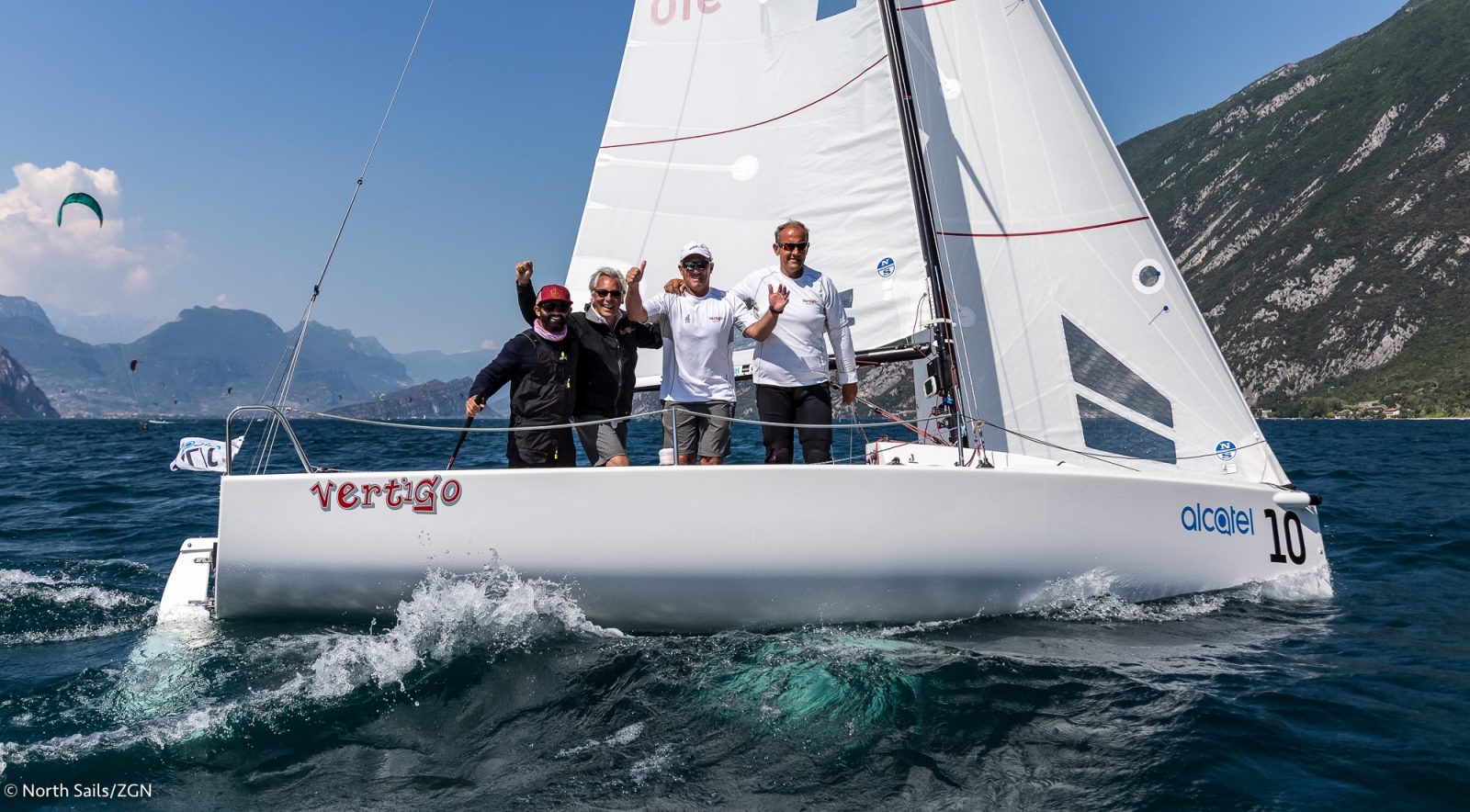
J/70 ITALIAN SERIES ALCATEL CUP: MALCESINE, ITALY
J/70 ITALIAN SERIES: ALCATEL CUP
North Sails Teams Take Act 2 of the Italian J/70 Series Scoring 1,2,3,4,5,6,7,9, and 10th!
Great results from Malcesine, Italy where Act 2 of the J70 Italian sailing series took place this past weekend in the most beautiful sailing conditions.
With 68 teams on the starting line, North Sails clients placed 9 out of the top 10 with unbelievable performances by the top finishers in both overall and Corinthian division.
Overall, an impressive victory for team ‘Calvi Network’ with skipper Carlo Alberini and crew members Branko Brcn, Karlo Hmeljak, and Sergio Blosi. They won the regatta with four bullets! Using North Sails XCS 1 mainsail, J2 jib, and Ap1 kite, they were faster than ever and were untouchable!
The Corinthian podium was also proudly powered by North Sails. First place was team ‘White Hawk’, with skipper Gianfranco Noe. In second was ‘Pensavo Peggio’ with skipper Andrea Magni. In third was ‘DAS Sailing’ with skipper Alessandro Zampori.
Congratulations to our clients! Next stop, Garda for the Euro Cup!
READ MORE
READ MORE

J70 TUNING GUIDE
For answers to your speed and boat handling questions, read our tips and tricks in the J/70 Speed Guide.
READ MORE
READ MORE
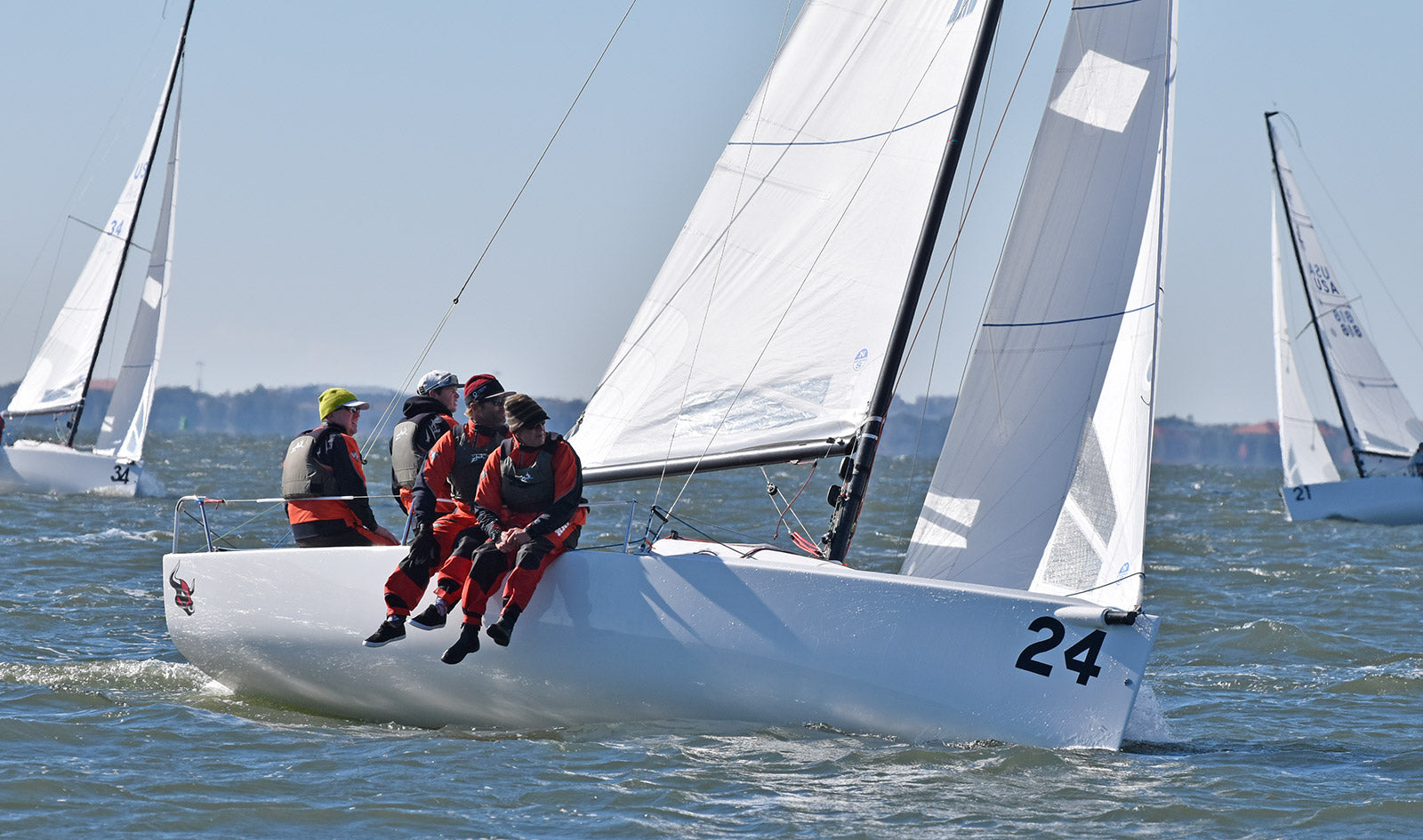
THREE REASONS 'STAMPEDE' CHARGED THE J70 WINTER SERIES
We caught up with Bruno Pasquinelli who is owner and helmsman for J70 “Stampede”. Bruno won the J70 Winter Series held in Tampa, Florida at the Davis Island Yacht Club this year.
The J70 Winter Series is composed of 3 events between December-February with one overall series winner. We asked Bruno how he prepares for events like this, and how it contributed to his success.
What are the three most important factors that helped you and team Stampede win the 2017 J70 Tampa Winter Series?
Boat/Sails/Crew
I have great ground support from Jay Vige. The boat is well prepared and maintained when we get to the regatta and need to go sail. The electronics have batteries, the radios work, preventive maintenance has been done, the rig is set to the micrometer settings, etc.
“We have confidence that our boat is ready for the event and are not distracted by boat issues.”
Work on my skills
Stampede sails each big event with a top tier team of sailors. I am the weak link on the boat. I am an amateur sailor with no formal training. I try and learn things every time I sail. I keep a detailed journal about the boat/rig/sails/conditions for each race we sail. This is helpful when we meet as a team prior to an event and then every day before we sail to make sure the boat is going out to the course with an effective setup for the conditions that day. I also put notes in the journal about skills or situations I don’t execute well. I have sailed with some great people over the last year and the first thing I tell them when they get on board is that this is recreation(fun), I want to do well, and that they are my coach. I want feedback on things that will up my game. These things go in my journal. Some of my notes over the last year include entry/exit angles for mark roundings, tiller movement on tack/jibe/mark rounding exits, slowing down at the leeward mark to not get stuck outside the pinwheel, starting techniques, etc. I draw diagrams in the journal and study them before I sail at each event. I have GoPro footage from every race and I review the footage on the plane while traveling to the events. The camera is mounted directly over the tiller and the video clearly shows when I drive well and when I don’t. I review the video of the “incidents” in my journal.
Sail a big event every month
This helps me retain the skills I am learning from each event and raise the performance of the boat.
“Trying these three things together gives me the confidence to concentrate on my job on the boat and leave everything else to the team. It is working.”
We had a great Worlds in San Francisco and won the Davis Island Winter series. Lastly, our sails are awesome, thanks North Sails!
READ MORE
READ MORE
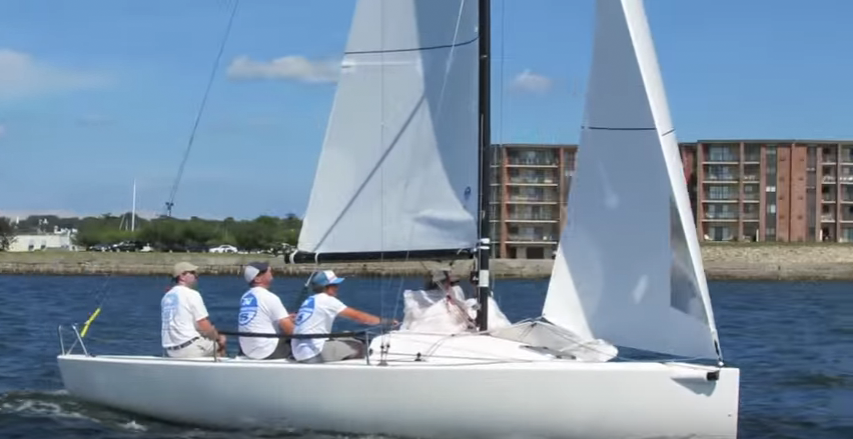
VIDEO: J/70 BOAT HANDLING WITH TIM HEALY
BASIC J/70 BOAT HANDLING WITH TIM HEALY
Spinnaker Set Up
Spinnaker Take Down
Tack and Gybe
Get in touch with Tim Healy if you have questions.
READ MORE
READ MORE
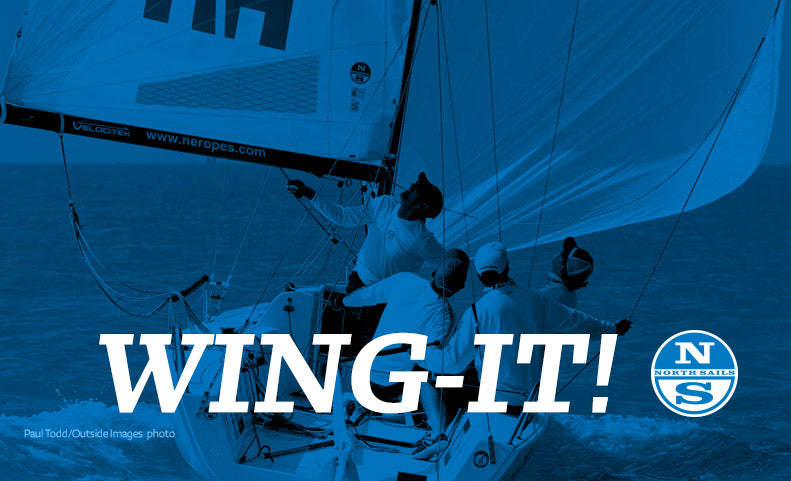
VIDEO: WING-ON-WING DOWNWIND TECHNIQUE
WING-ON-WING WITH TIM HEALY
Downwind Technique
The J/70 class at the 2016 edition of Key West Race Week saw more of the same in addition to a new twist. As in previous years the J/70s had the largest fleet (54 boats) and some of the toughest racing against a very talented group of sailors. What was new this year was how many of those sailors were sailing their boats on the downwind legs.
Sport boats like the J/70, with asymmetrical spinnakers, sail faster at higher angles, but the trend in Key West this year was to sail the boats Wing-on-Wing downwind. At first, the sight of these sport boats attempting to sail straight downwind seems counter-intuitive, but many seemed to be making it work to their advantage. Not really a big surprise that there is something to gain from sailing the straightest course to the mark while other boats in the fleet sail traditionally higher sailing angles and longer distances.
After talking with some of the J/70 sailors in Key West, this new downwind mode has resulted many teams practicing and perfecting the specifics of the Wing-on-Wing trimming and sail handling. However, even with teams practicing, the big question for the boats attempting this unorthodox downwind mode is: When does it work and when is it better to keep this mode in the bag? Wing-on-wing can provide an advantage in certain conditions and situations. If it is used at the wrong time, distance can easily be lost to other boats in the fleet. Our team, having practiced sailing wing-on-wing in a variety of wind conditions and sea states, has decided that the maneuver is something to be used sparingly.
WHEN IS THE BEST TIME TO SAIL WING-ON-WING?
We have found that there are 3 criteria that need to be met in order for Wing-on-Wing to be an effective option. Those criteria are:
1. Wind Speed
The amount of true wind is important because the asymmetrical spinnaker is unstable and difficult to fly when sailing straight downwind. If the wind is too light, the pressure in the spinnaker will not be enough to help it fly away from the boat while on the wing. 9-13 knots of wind seems to be the sweet spot for the wing mode. Basically, enough wind to fly the sail Wing-on-Wing and not yet, windy enough to plane.
2. Boatspeed
Once sailing Wing-on-Wing, boat speed is the test to see if the downwind mode is working or not. Our criterion for boat speed is after changing our mode from VMG towing-on-wing we ask, how much did our speed drop? For the wing mode to be effective, there has to be little or no speed loss relative to the boats sailing the VMG mode. Since Wing-on-Wing is most effective in the same conditions as the normal VMG mode, the speeds while sailing in pressure should be comparable and the gains made are due to sailing the shorter distance(lower angle) downwind.
3. Sailing Lane
Sailing the traditional VMG mode downwind allows a range of sailing angles, like sailing higher in the lulls and lower in the puffs. When sailing Wing-on-Wing, the mode demands a very specific sailing angle in order to fly the sail and it is important to ensure that your sailing lane is clear because changing course can easily collapse the spinnaker. We always have someone watching behind while on the wing to make sure our land and wind is clear and we are able to sail the proper angle while on the wing.
After deciding to switch from VMG mode to Wing-on-Wing, the technique and boat handling can make or break the success of the maneuver. Here some of the boat handling tricks we use to help get to the wing mode, stay Wing-on-Wing and switch back to VMG mode.
Going from VMG to Wing-on-Wing
Transitioning from the normal VMG mode toWing-on-Wing is best achieved by gybing the mainsail and keeping the spinnaker flying on its current side. When the crew is ready, the boat is turned downwind and the main is pulled across to the other side. As the boom crosses the centerline, the boomvang should be pulled tight to help flip the full battens and avoid catching on the backstay. While the main is gybing, one crew member should stand up and briefly hold out the spinnaker sheet in order to keep the clew of the sail from falling in toward the boat.
Angle of Heel
Once the main has been gybed, the boat should be quickly heeled to windward (boom up) about 10-12 degrees. The skipper or other crew member should continue to hold the spinnaker sheet away from the boat while the trimmer maintains the sheet tension. Maintaining windward heel is critical to keeping the clew of the spinnaker away from the boat, especially in the lulls.
Apparent Wind Angle
Along with the proper heel angle, maintaining the most efficient apparent wind angle is also important sailing Wing-on-Wing. We have found that sailing an apparent wind angle of 5-10 degrees higher than straight downwind is the best to keep the spinnaker flying and will maximize boat speed. Sailing too high could cause the sail to collapse and sailing too low will cause the main to shadow the spinnaker decreasing the pressure in the sail.
Back to VMG mode from the Wing
Switching back to VMG mode from Wing-on-Wing can be done by gybing the main or the spinnaker. Gybing the main is the quickest and easiest. Turn the boat into the gybe and like going to wing mode, as the main is crossing the centerline pull the boomvang tight to help it clear and fill on the new side. Rolling during the gybe will also help the boat turn and allow the crew to flatten the boat after the gybe aiding in acceleration. The other option back to VMG mode is to gybe the spinnaker. Simply, boat is heeled to leeward and turned up as the spinnaker is rotated to the new side. To help the spinnaker switch sides, and prevent it from wrapping, the trimmer should start rotating the sail just before the boat is turned.
After all the practice and racing in Key West, totaling around 50 downwind legs, I would say we used Wing-on-Wing mode on about 10-15 legs during the week. Of the legs where wing mode was used by our team, we averaged about 1-2 minutes per attempt and would switch back quickly to VMG when we were not gaining or after we had already consolidated our position on boats near us. Not every attempt we made at Wing-on-Wing worked in our favor, in fact during the event we were learning which situations were working best for our boat. Anytime we felt a loss in either our relative position, or distance on boats around us, we noted the reasons why the mode was less productive. Normally, our Wing-on-Wing losses were due to one or both of two factors…
1. Not Enough Wind
Because of a drop in pressure or being blanketed by another boat.
2. Bad Lane
Forcing us to change our apparent wind angle outside the optimum for the wing mode.
In the end, our team will be practicing ourWing-on-Wing mode more often to help ourselves and others better understand when to (and not to) use it on our way to the finish line.
North Sails One Design is proud of our continued commitment to developing the fastest sails and providing the best personal service and support for J/70 sailors. The proven performance along with our team of J/70 experts to help you to GO BEYOND is unmatched. Let us know if you need any assistance with sails or getting ready for your next regatta.
READ MORE
READ MORE
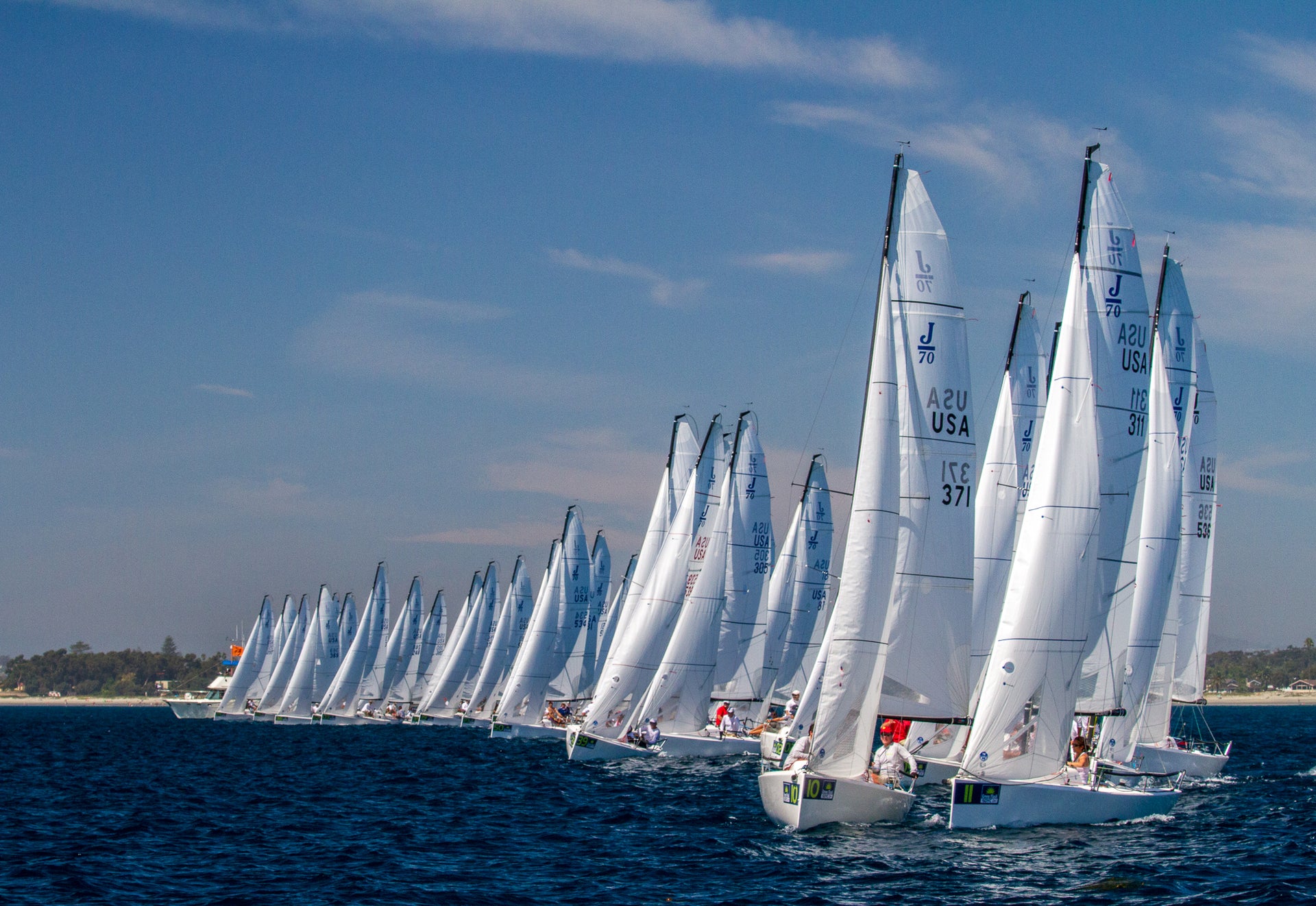
NEW TO THE J/70? 10 TIPS TO GET YOU UP TO SPEED
NEW TO THE J/70?
Ten tips to get you up-to-speed
“Before the 2015 J/70 North Americans I had crewed on the J/70 for a couple of years and thought I knew it pretty well. Steering is different (not harder) that crewing. We finished fifth overall which was a good start. Here are ten things I learned from this experience that will help you in almost any boat”. – Chris Snow
10 Tips:
Have clear consistent marks on your jibs sheets, both windward and leeward
You must have marks on the deck and clear marks on the sheets as reference points to duplicate fast trim setting on both tacks.
Do not steer the boat—rather steer as little as possible
Any small boat slows when the tiller is moved. I purposely held the tiller extension on my thigh upwind to minimize movement. Do your best to steer with crew weight-this applies to any boat.
The spinnaker trimmer steers the boat downwind
Be sure the spinnaker trimmer is constantly talking about pressure in the sheet downwind and telling you when to come up and down to optimize your angle downwind. She/he can feel that 100% better than you, the helmsman, can.
Check for weeds constantly.
In San Diego we had lots of weed and kelp. There is nothing slower than having weed or kelp on your rudder or keel. Keep a constant lookout and visually check if you have any doubts.
Have a tuning matrix and follow it.
Check your sailmakers tuning guide for rig tensions at different wind speeds. Make a chart of turns needed on your boat to get from one to the other. Follow it and set the rig back to base each time you return to the dock. This eliminates variables and second guessing and lets you concentrate on the race.
Sail the boat at a constant angle of heel upwind.
Very important to keep the boat at a constant angle of heel upwind. Use the head stay against the horizon as a guide. If you cannot hold the boat on a constant angle of heel the boat is either underpowered or overpowered. Decide which and adjust.
As helmsman downwind, help the crew with what is happening with the shifts downwind.
It is hard for the crew to know whether or not you are getting lifted or headed downwind (upwind it is easy) helmsman should keep an eye on the compass downwind and communicate to the crew what he/she is seeing.
On the J/70 learn to sail wing and wing easily.
Practice how much you need to turn the boat downwind to go to wing and wing and what conditions is works in (flat water, moderate winds). This is a tool that can come in very handy if you have it available but it takes some practice so as not to be too disruptive.
Trust your Velociteck!
This little wonder tells you how far from the line you are. Get good “pings” on both ends (be sure the line is set first) and trust it. I found it very helpful to have one of the crew calling time and another calling distance to the line converted to boat lengths (the unit displays in meters). You can use it to help you know when to accelerate for the line. See tips on how to get more from the Velocitek
Sail the boat like a dinghy.
All smaller one designs benefit from being sailed like an even smaller boat. Use your crew weight always to steer, move forward and aft depending on wind and sea state. Get good at roll tacking and jibing in lighter air. Heel the boat to leeward to round the leeward mark, etc… All boats will benefit from this.
More questions? Contact Chris Snow.
READ MORE
READ MORE





















